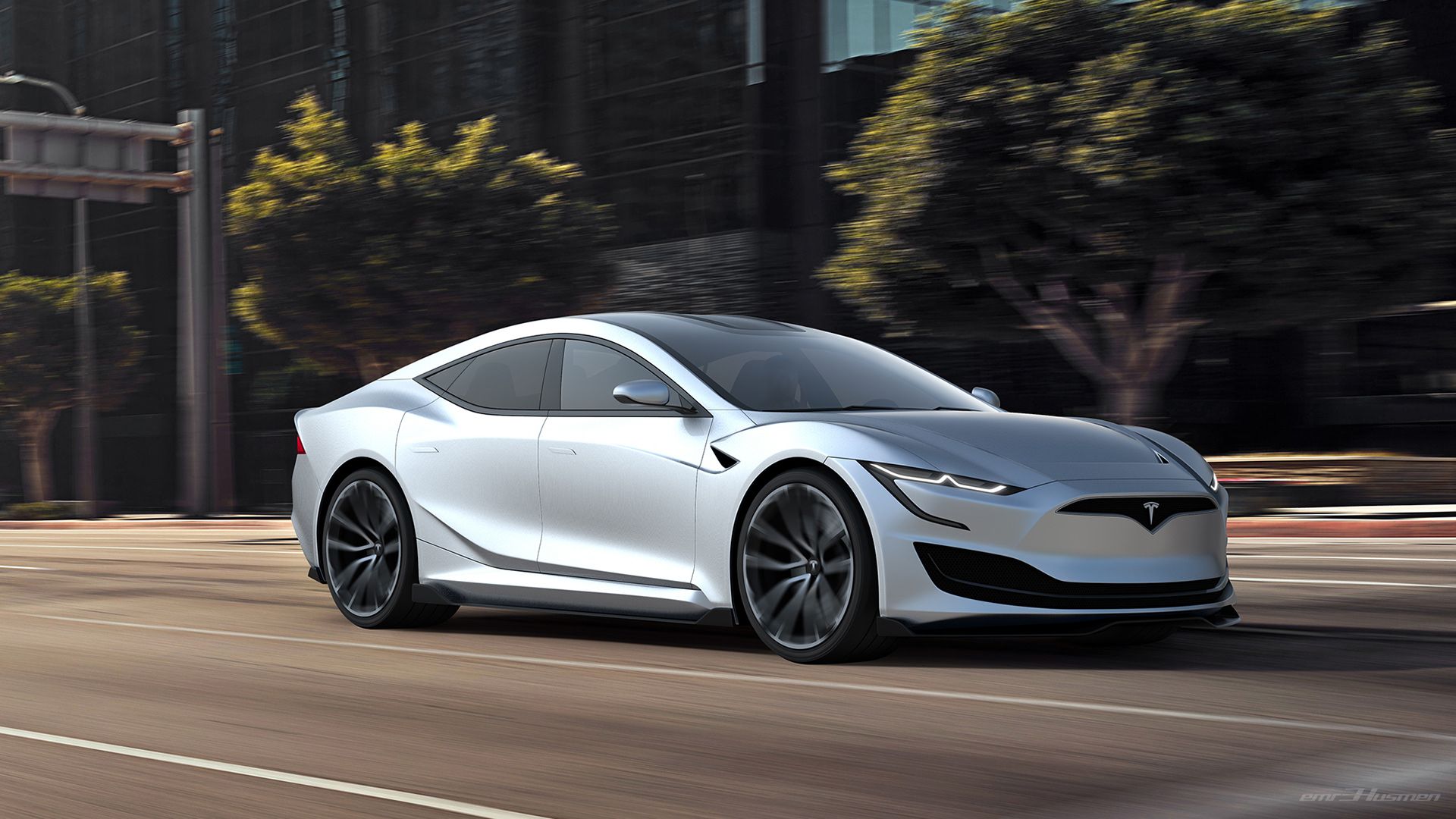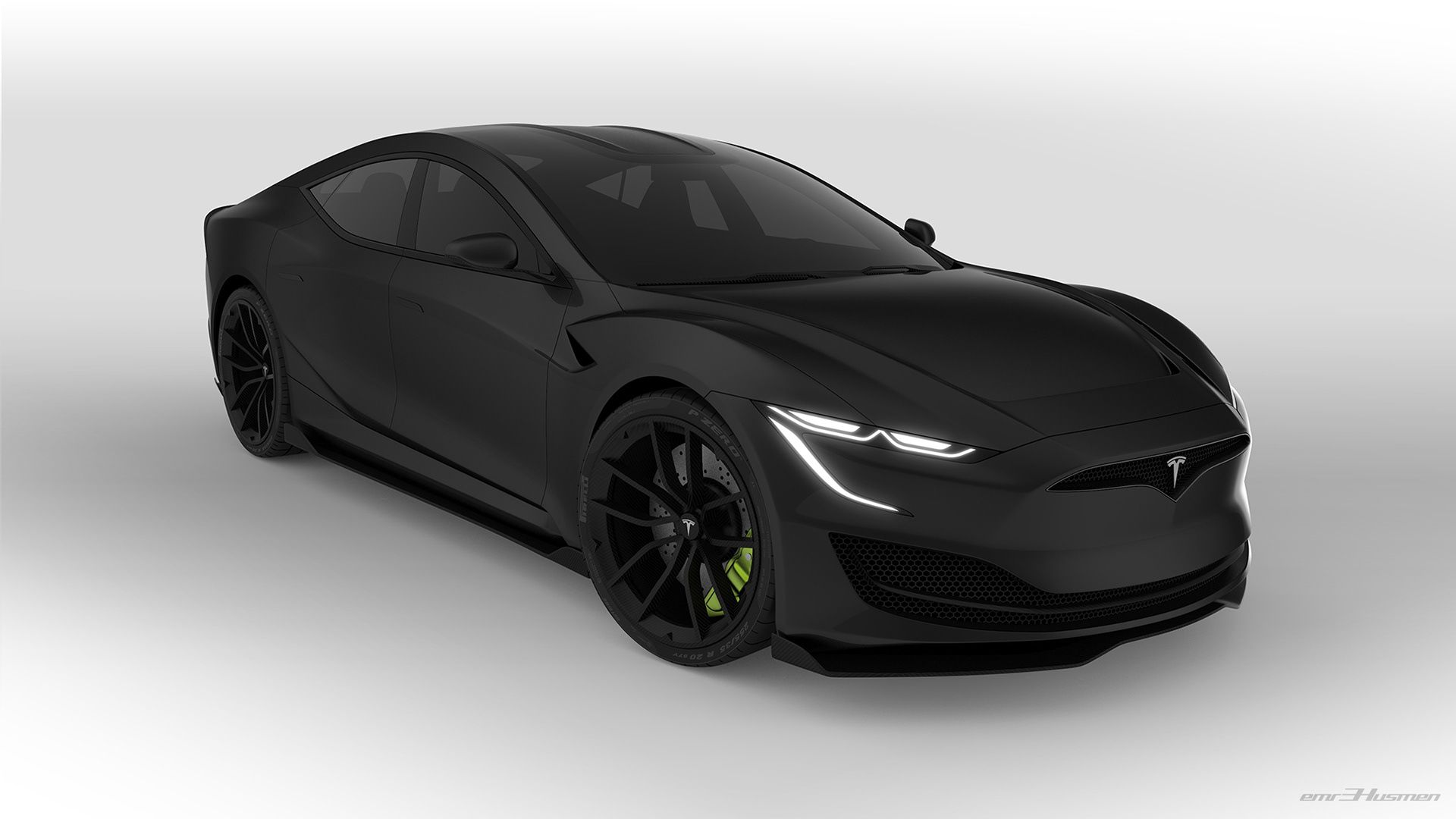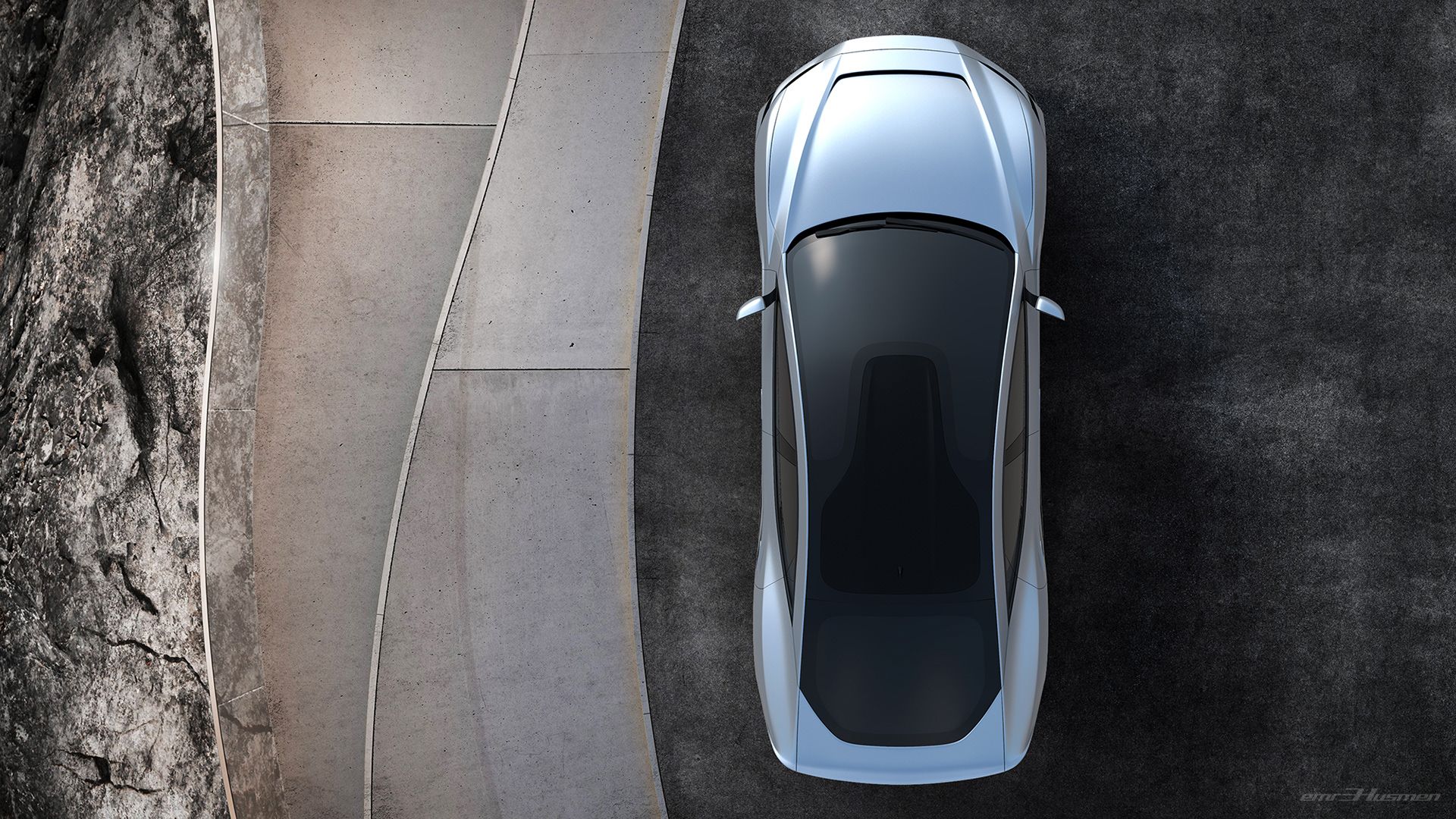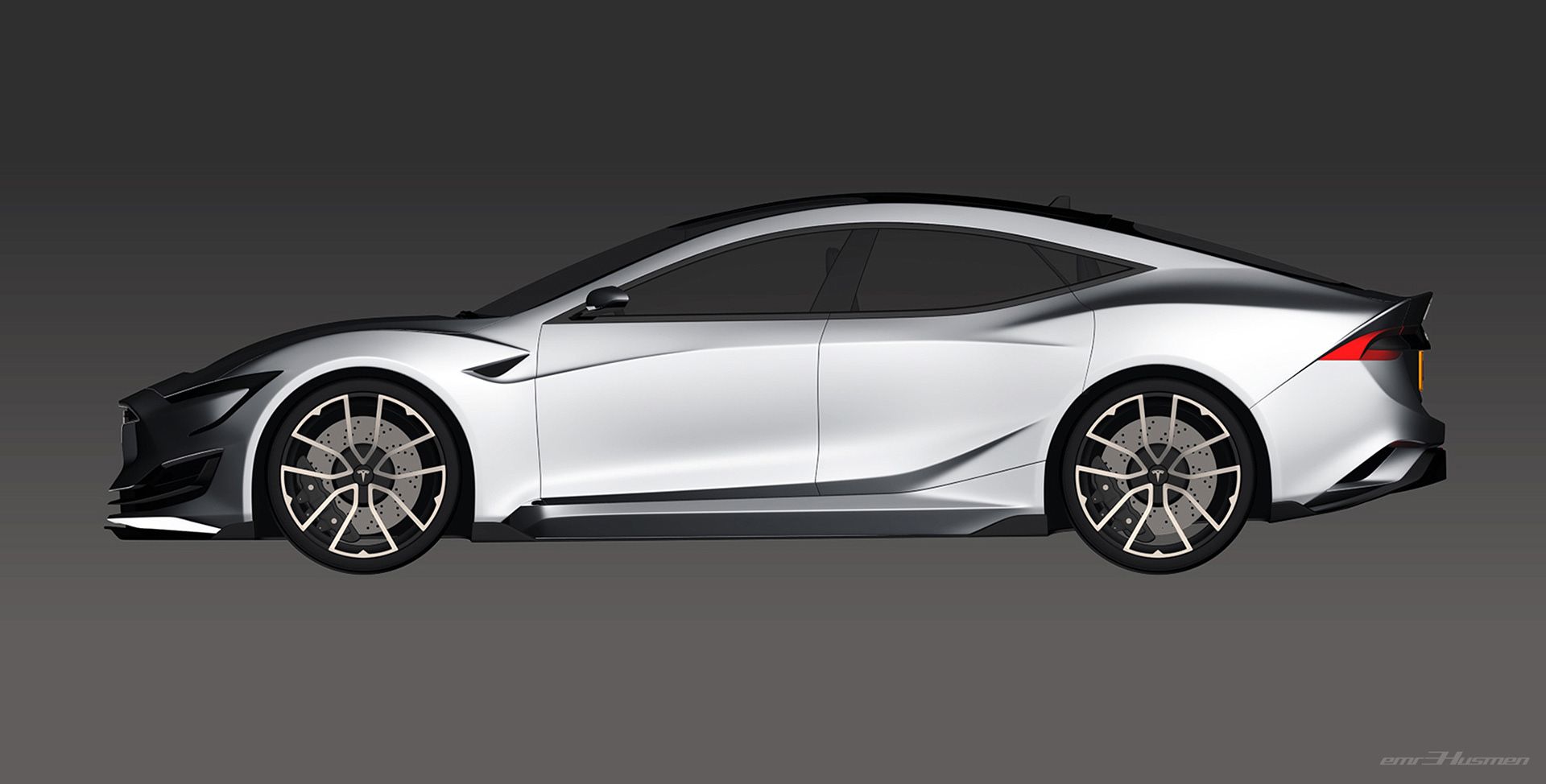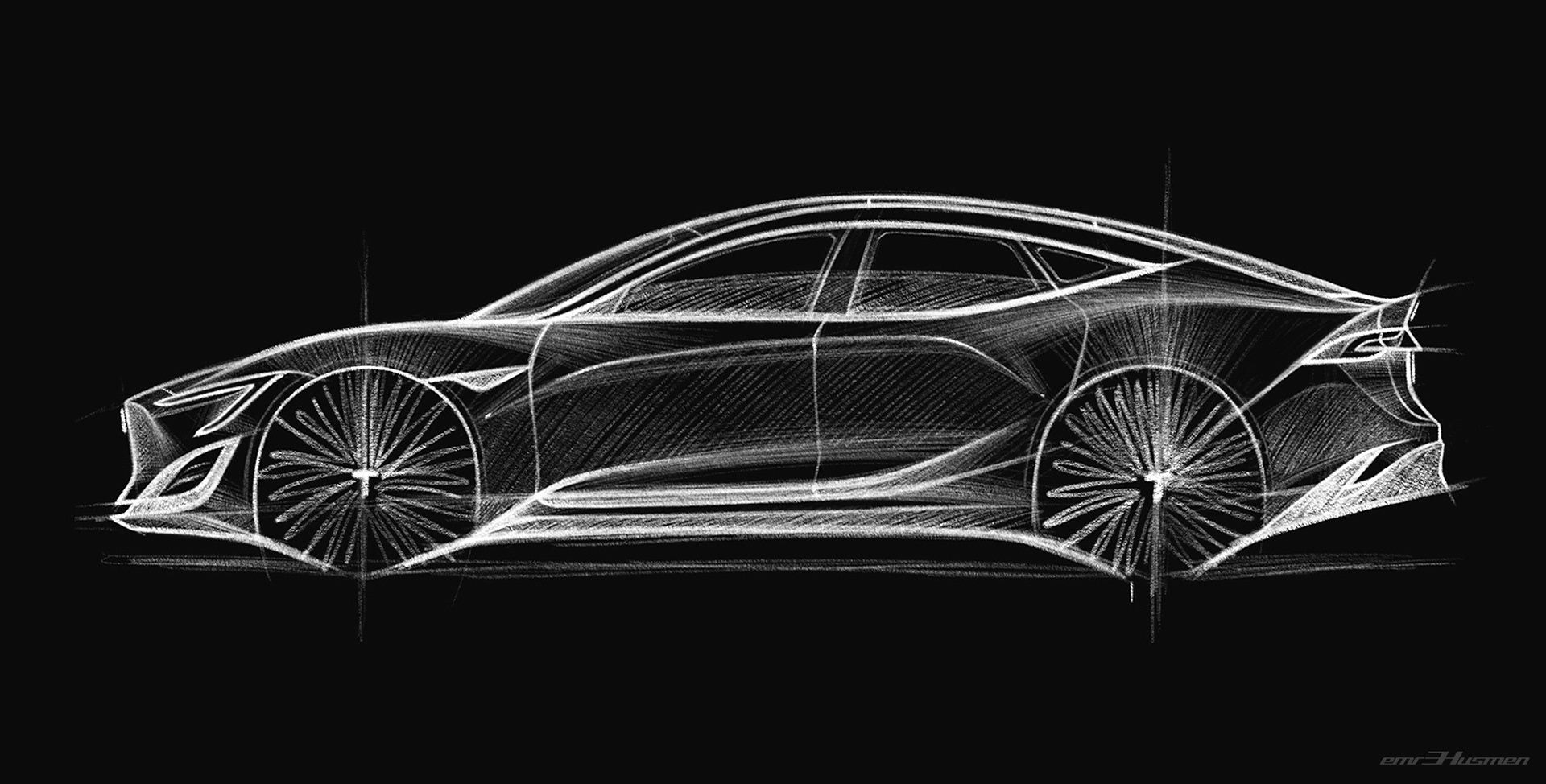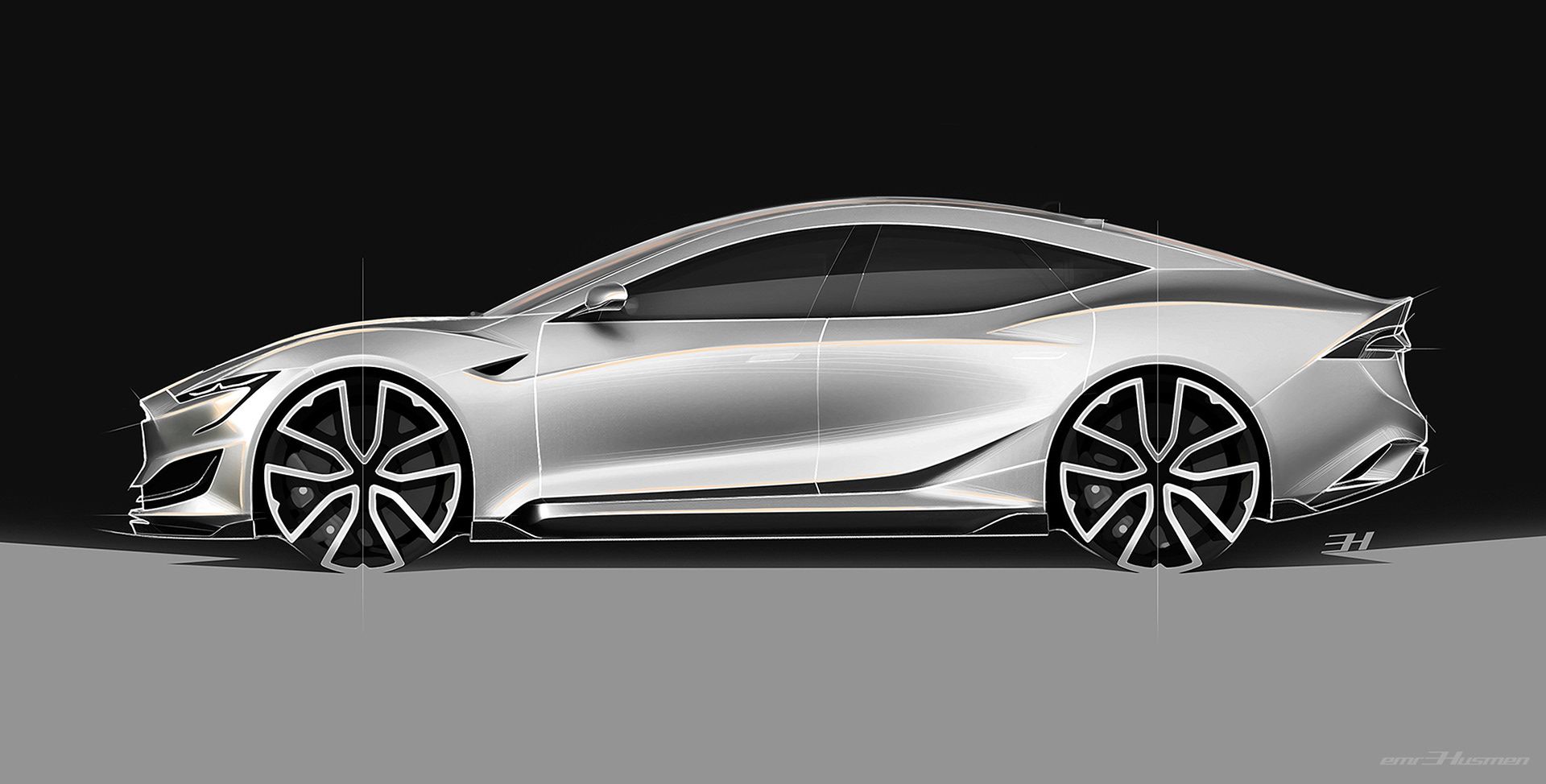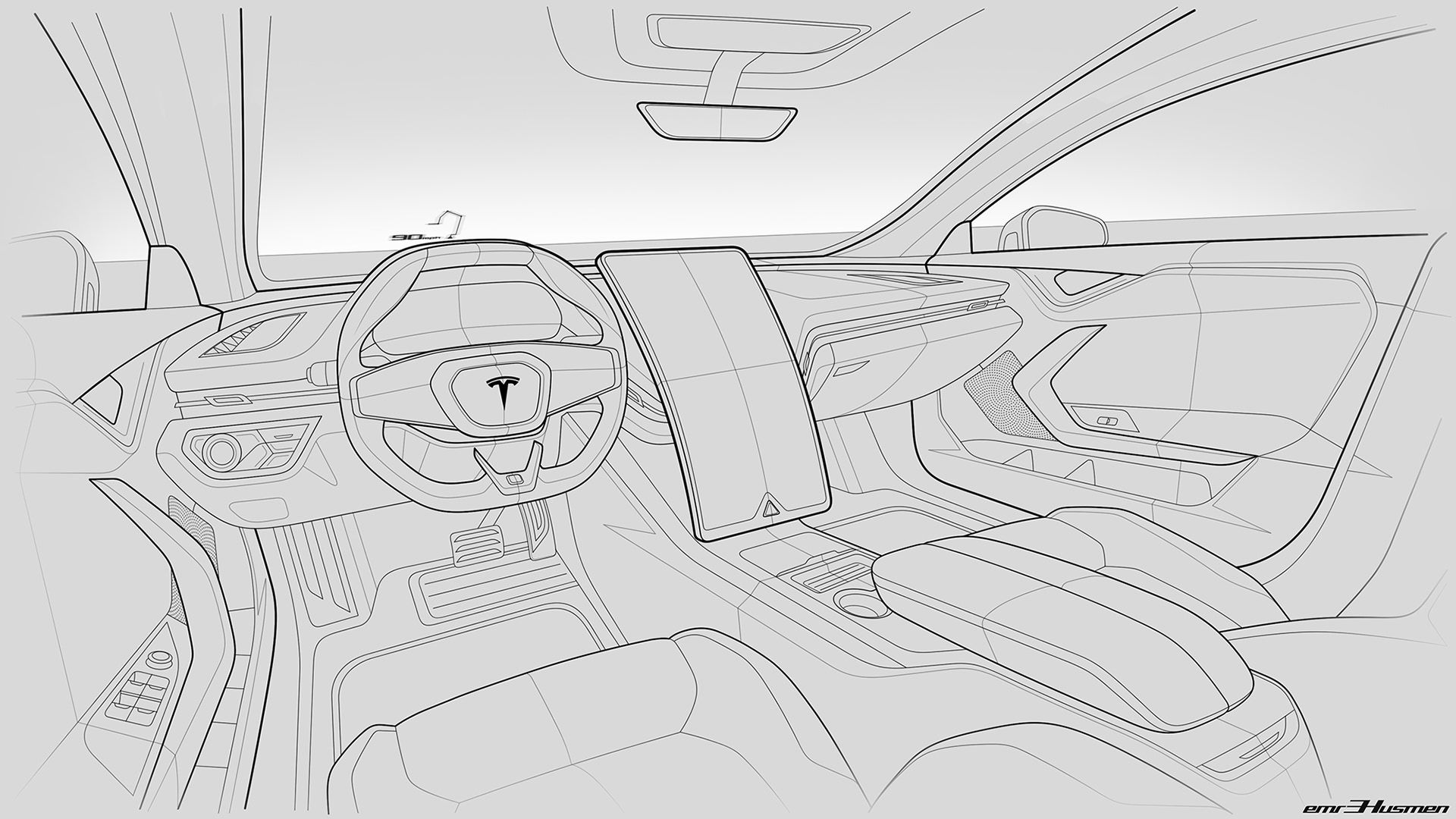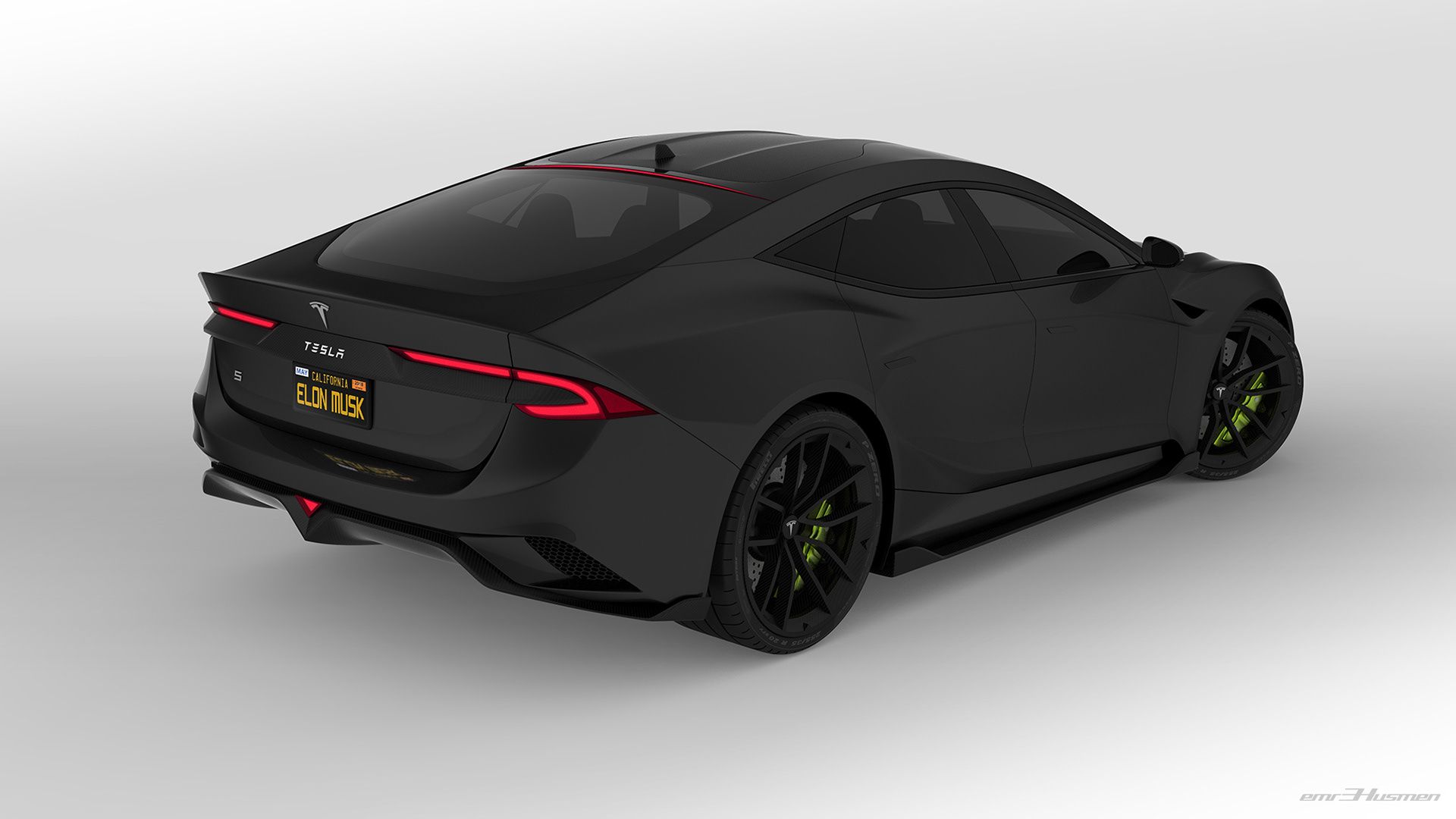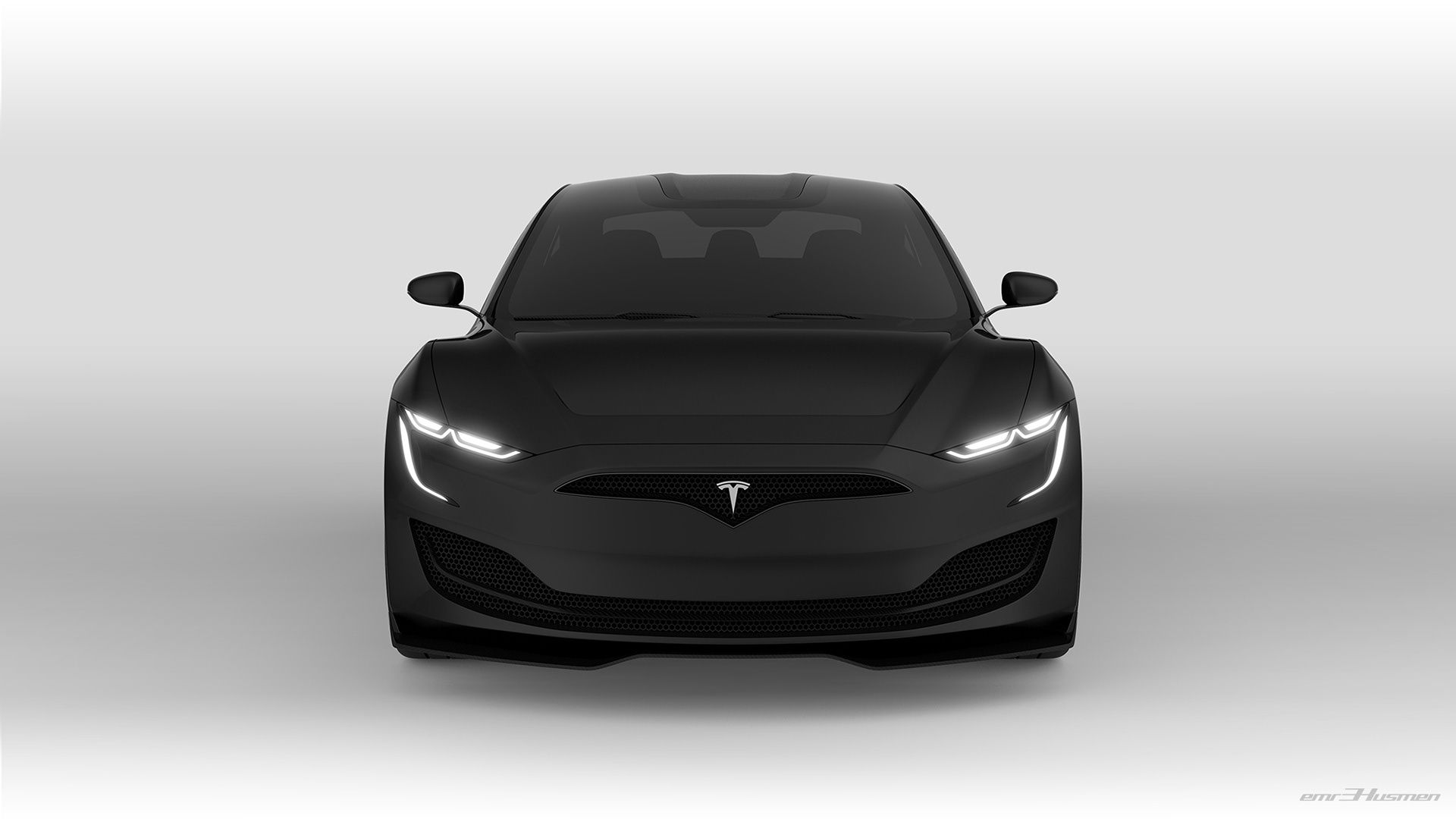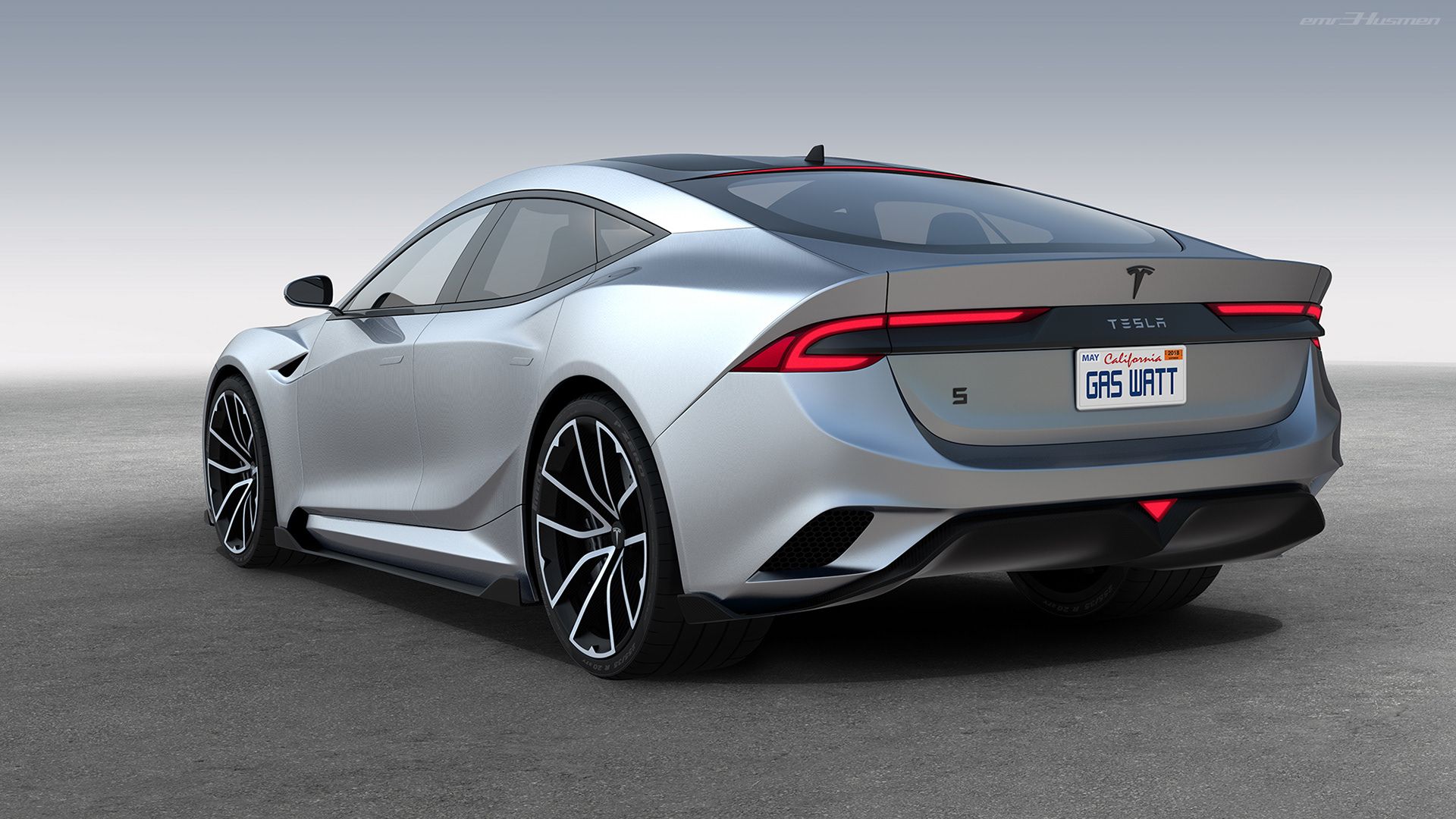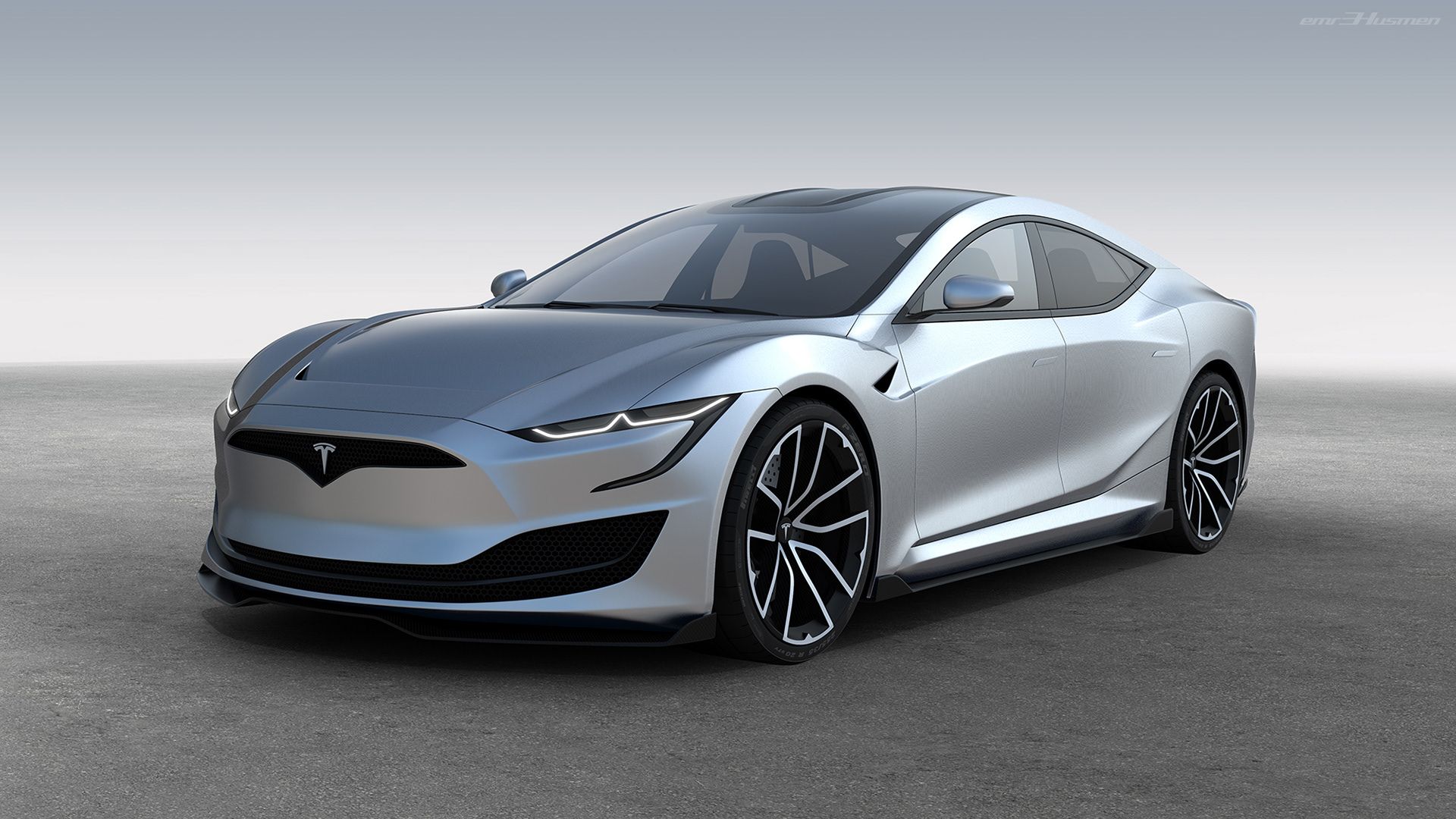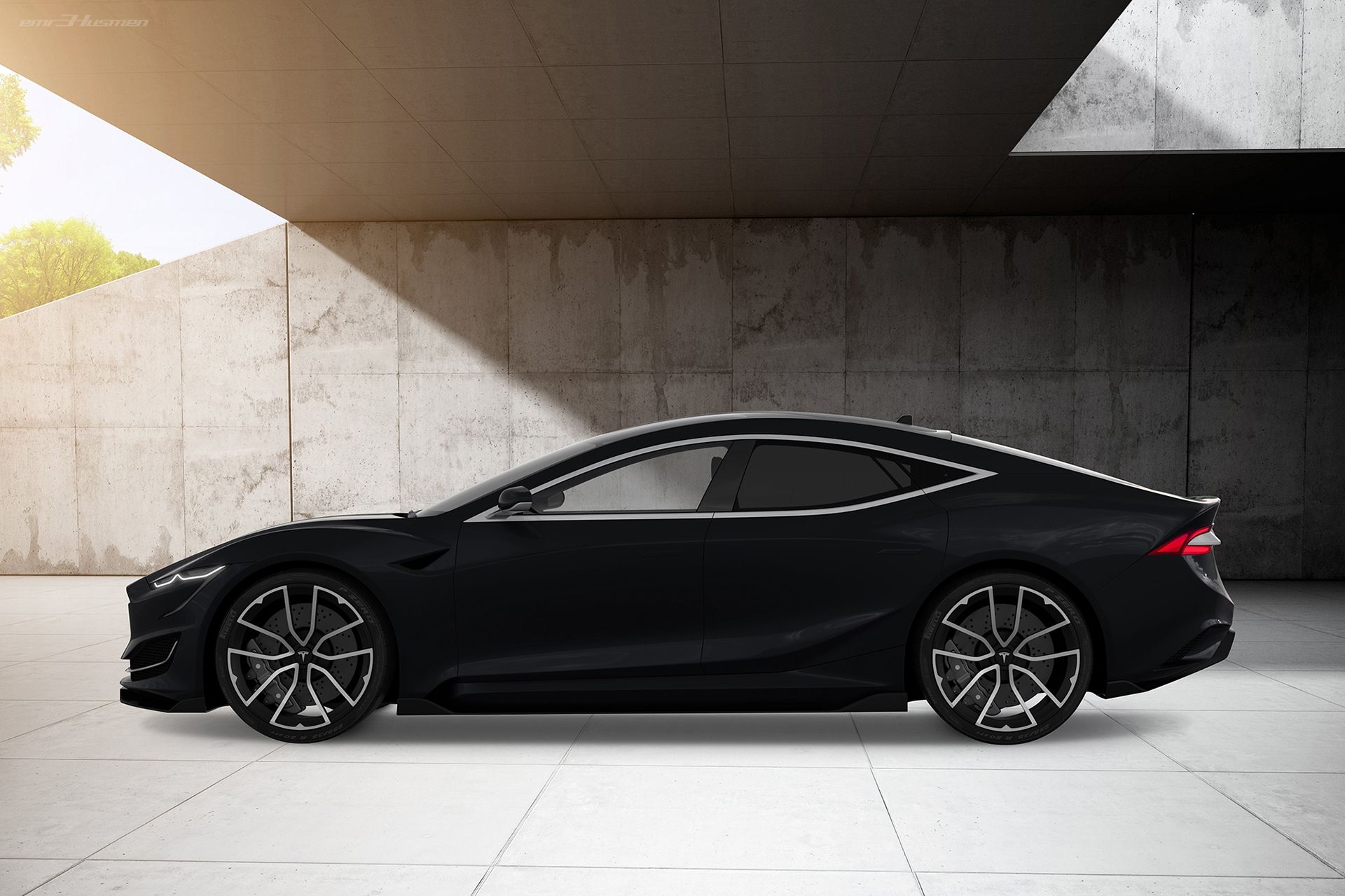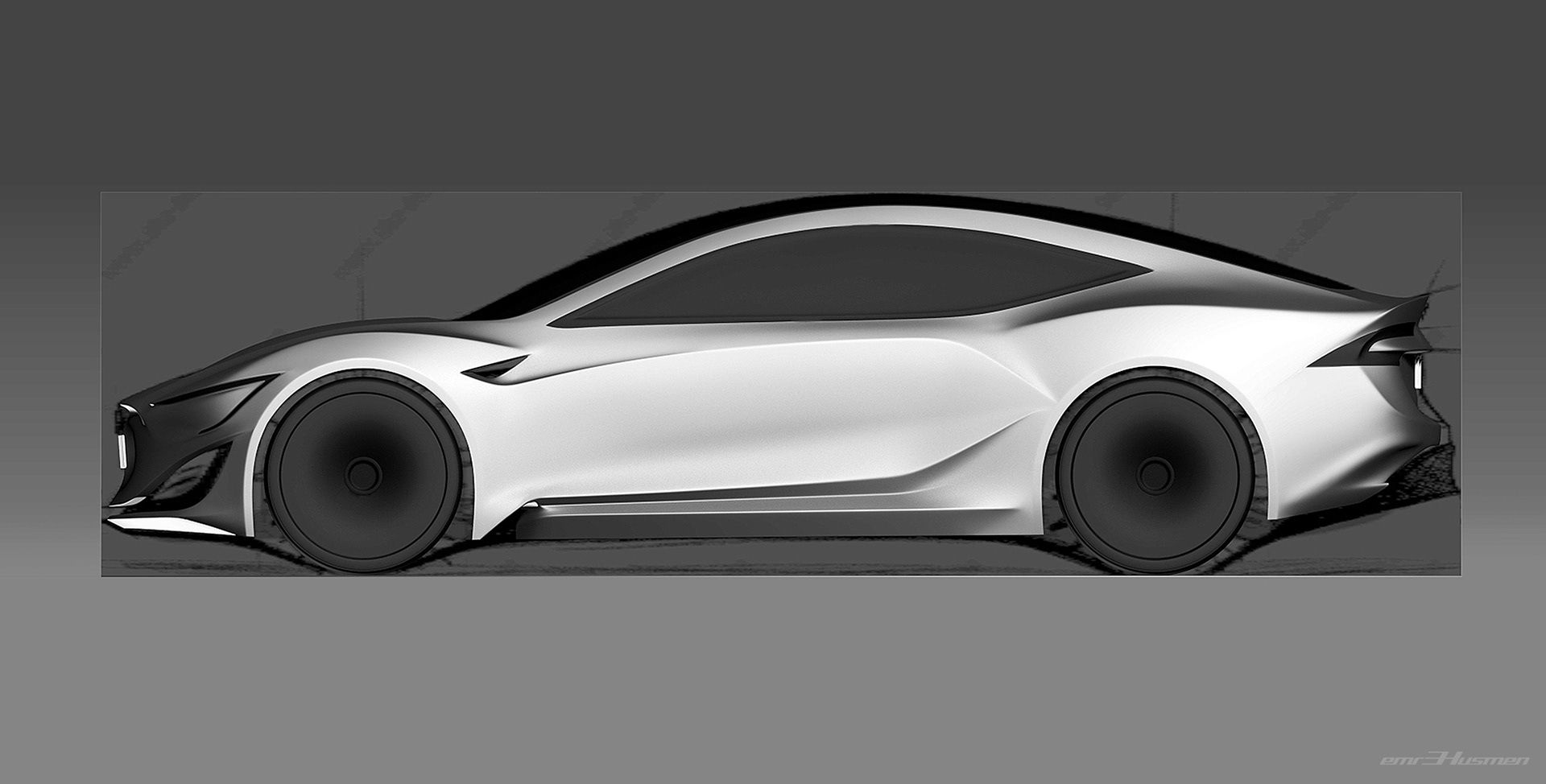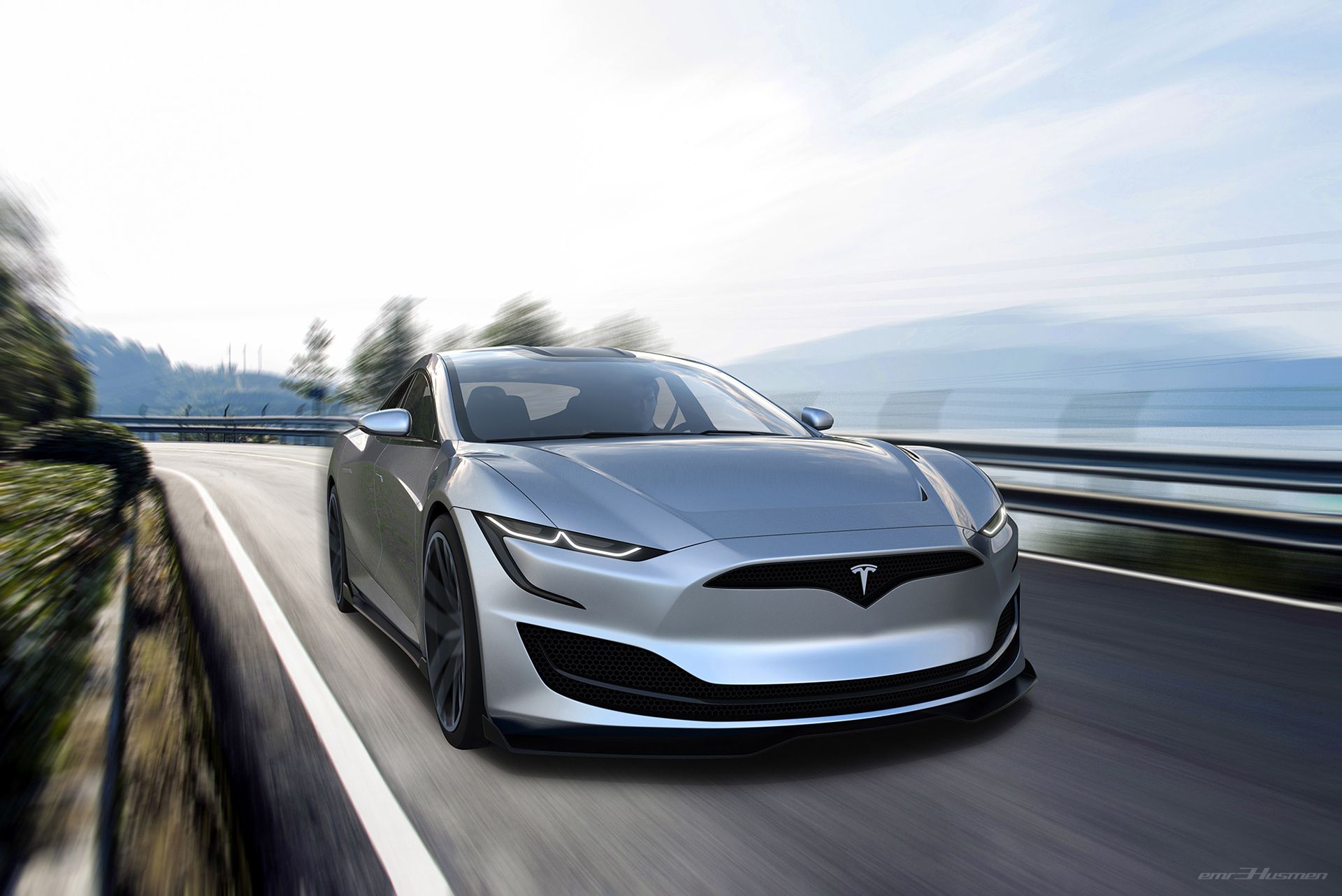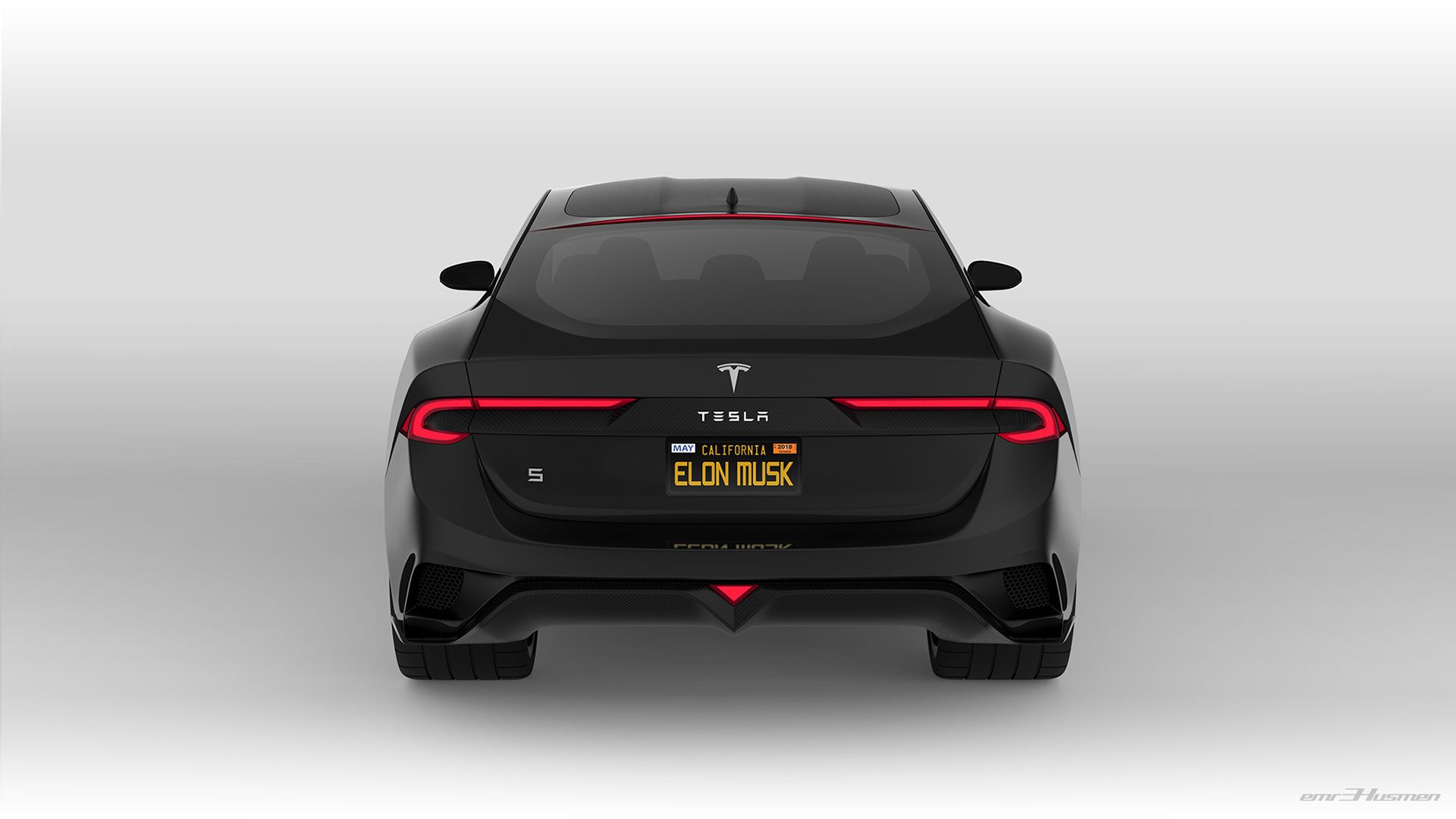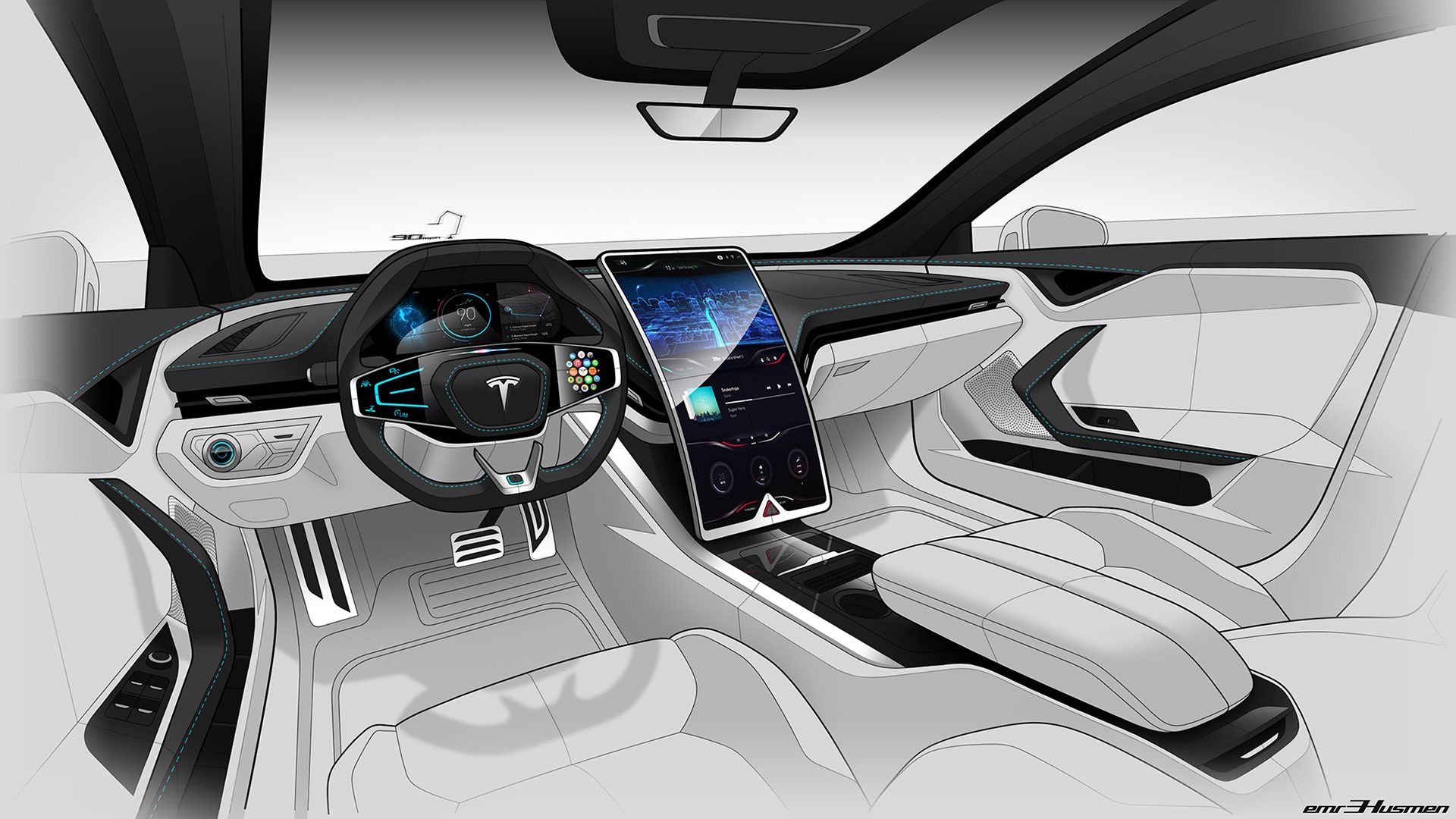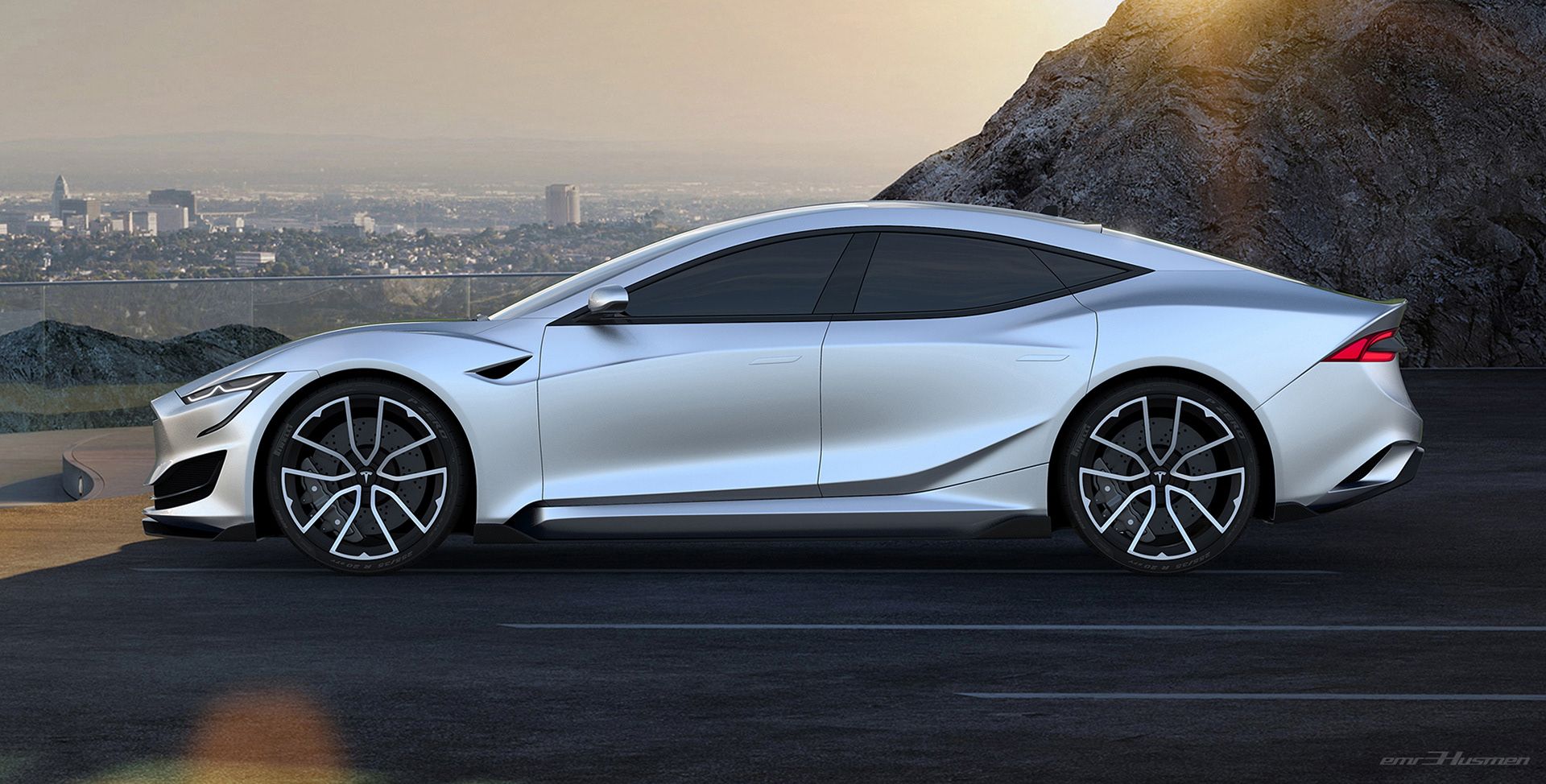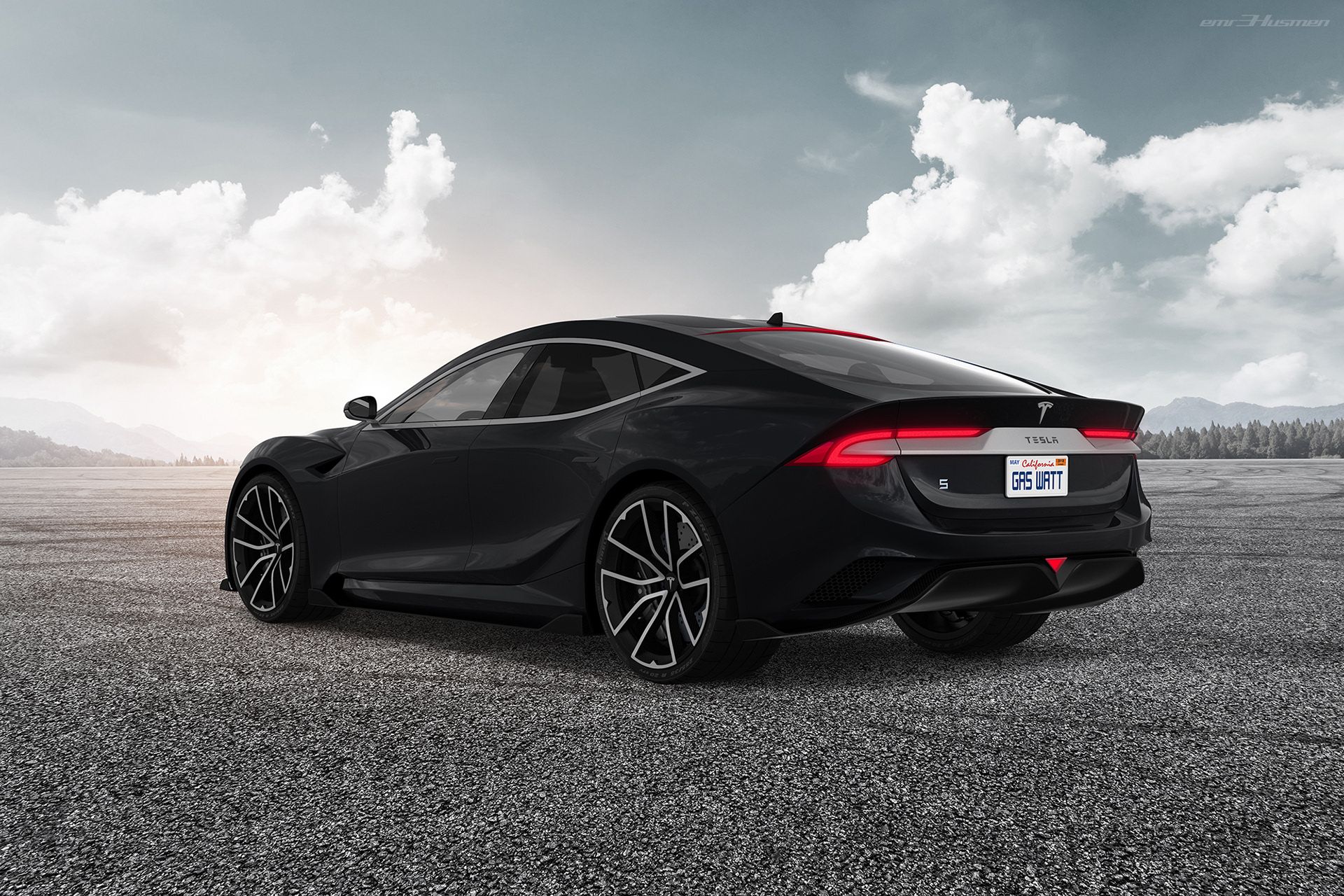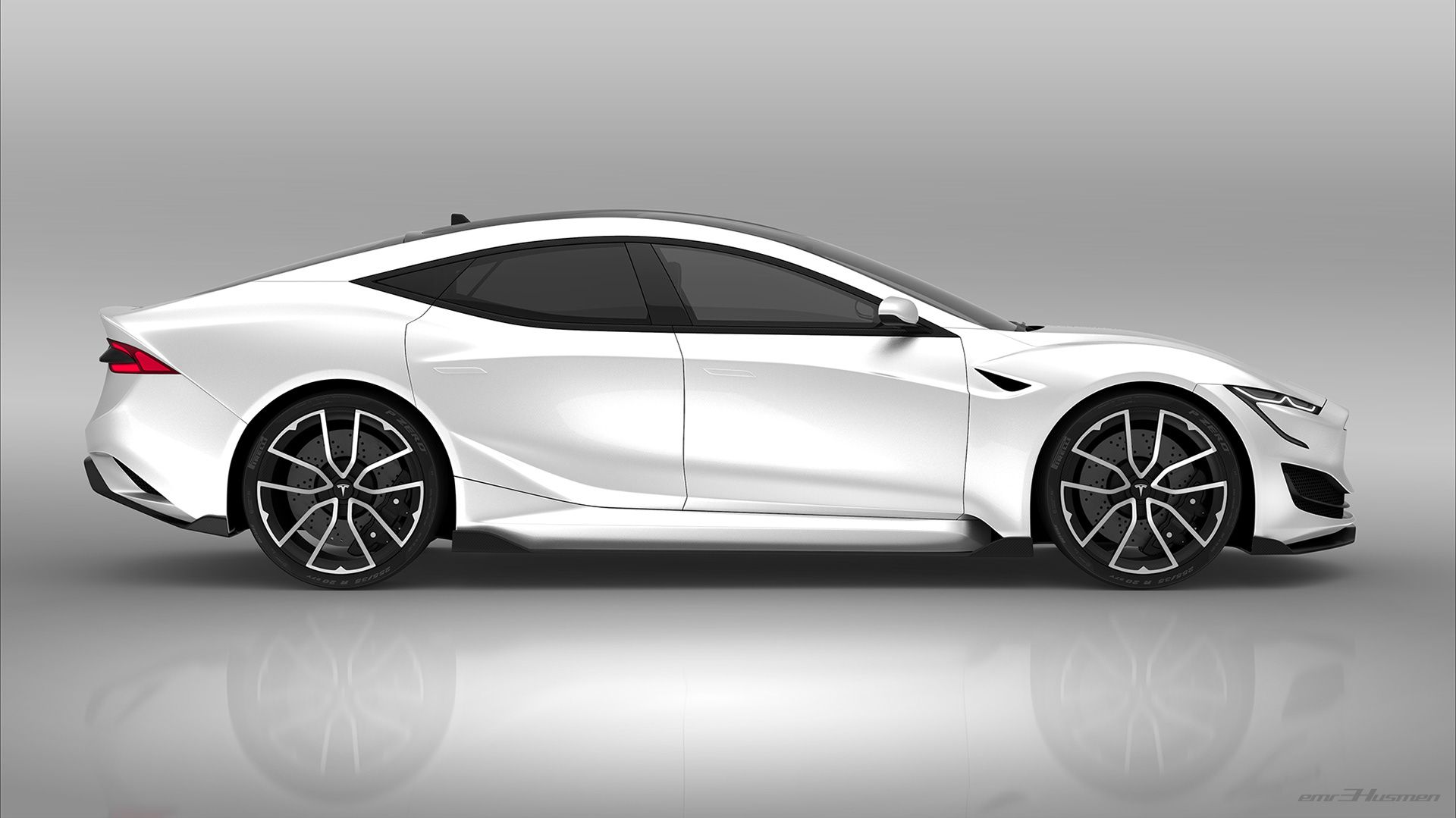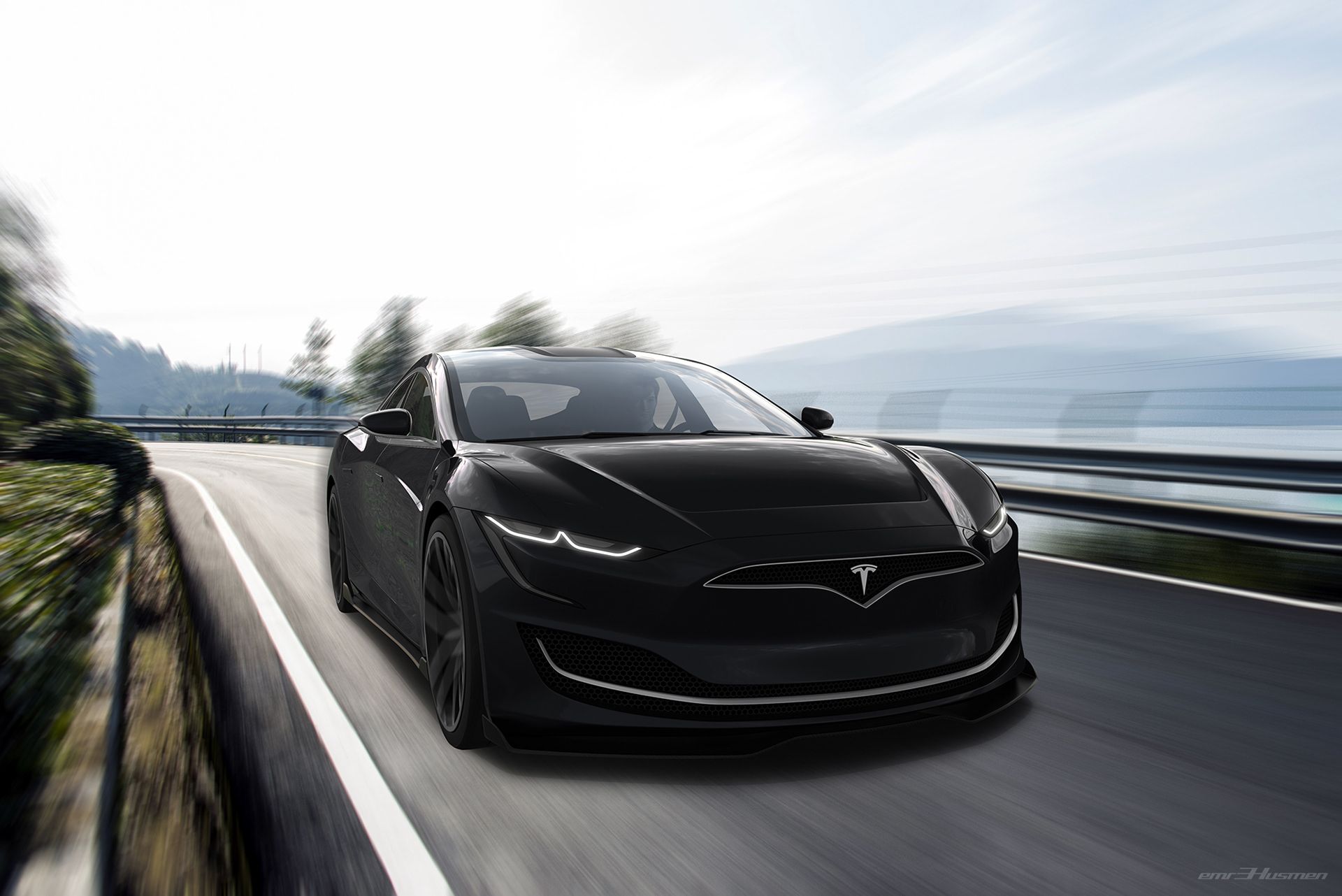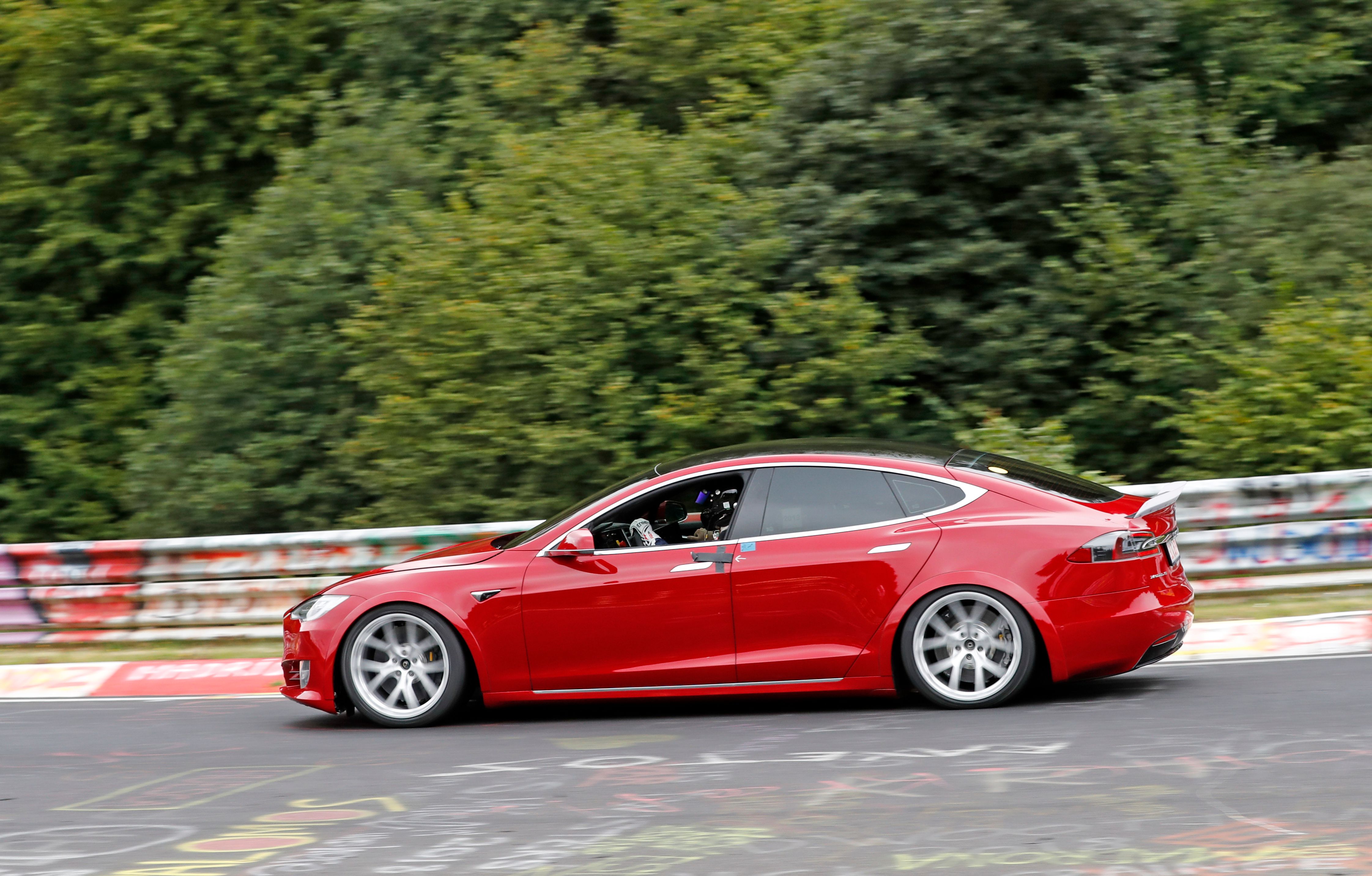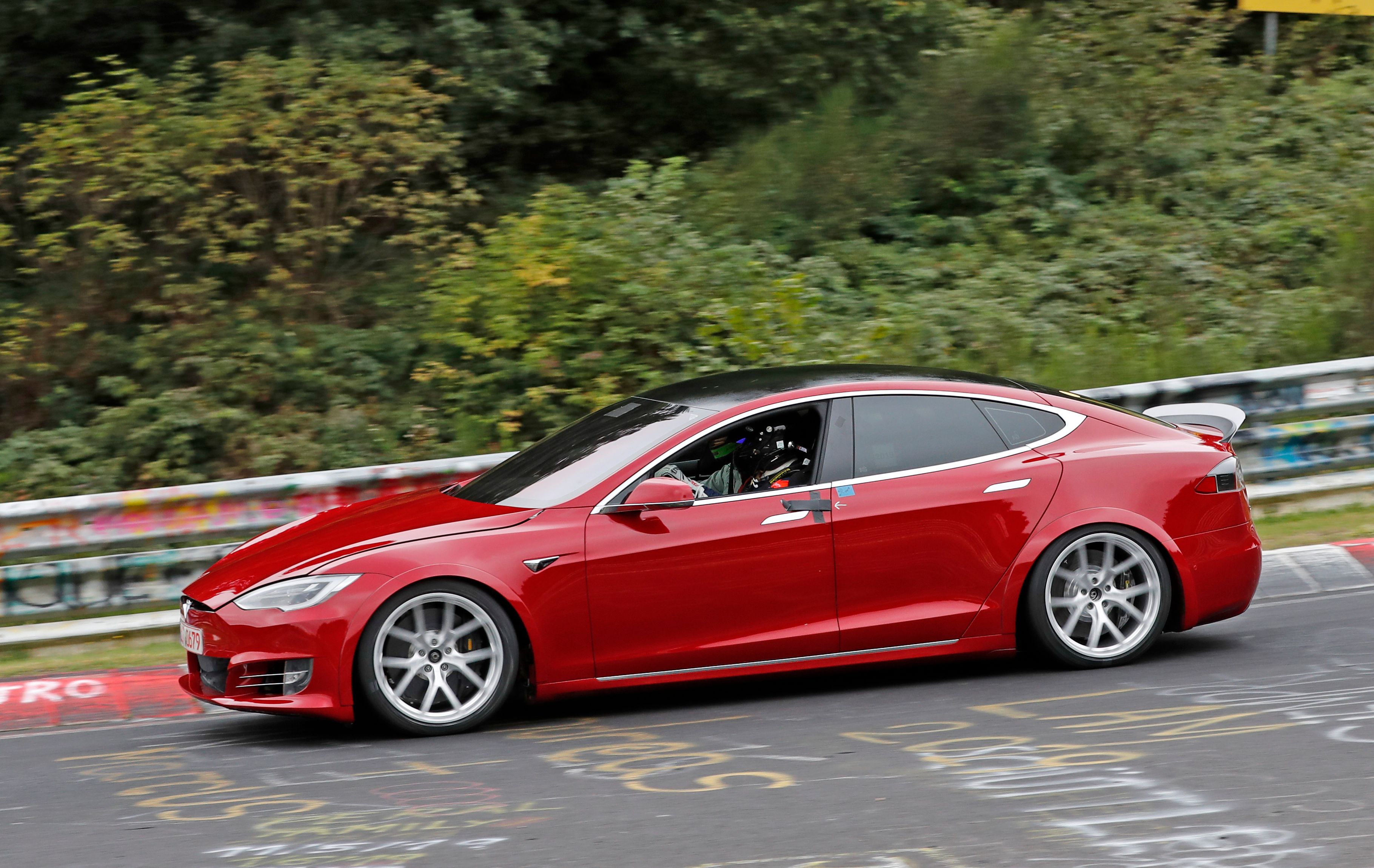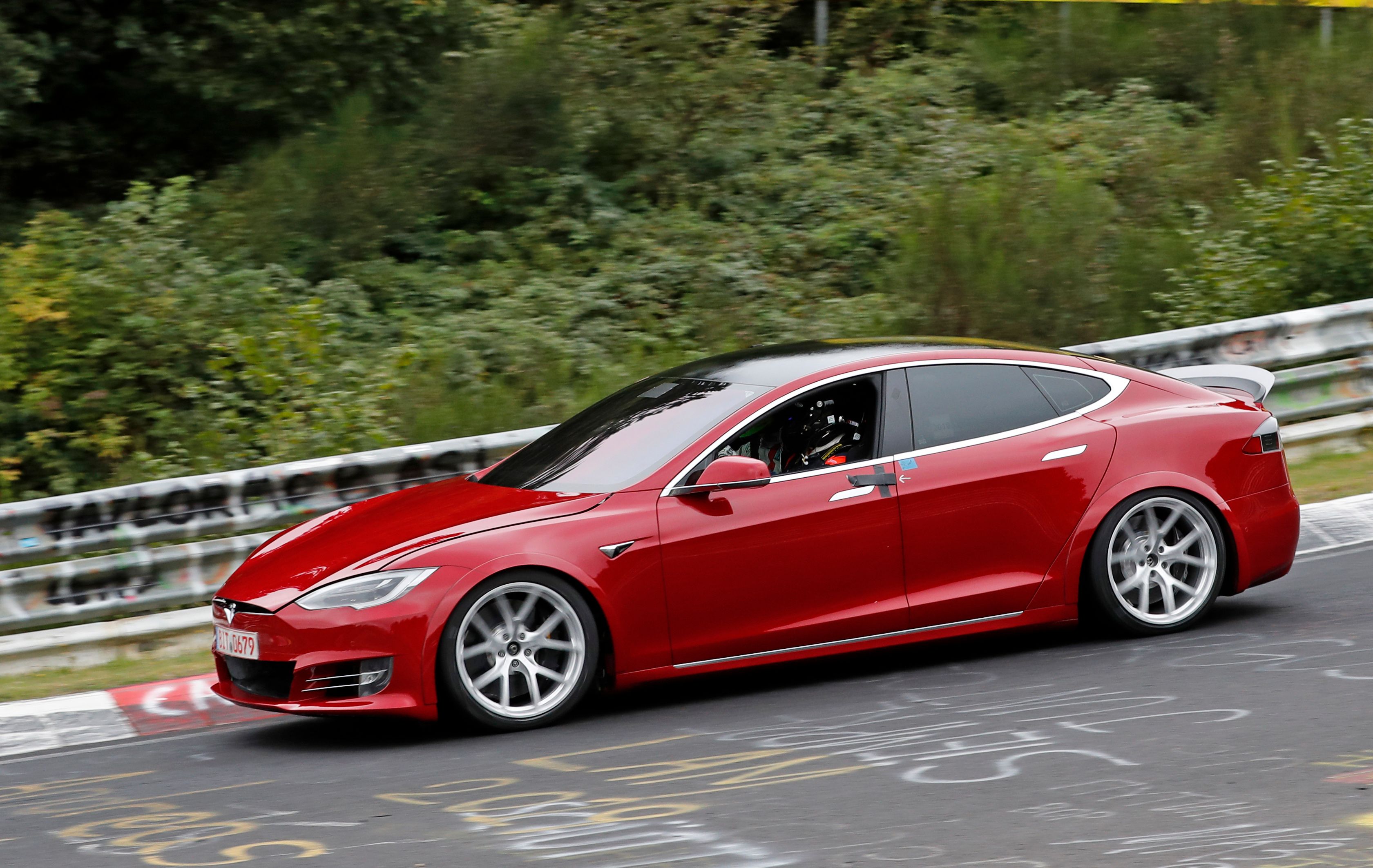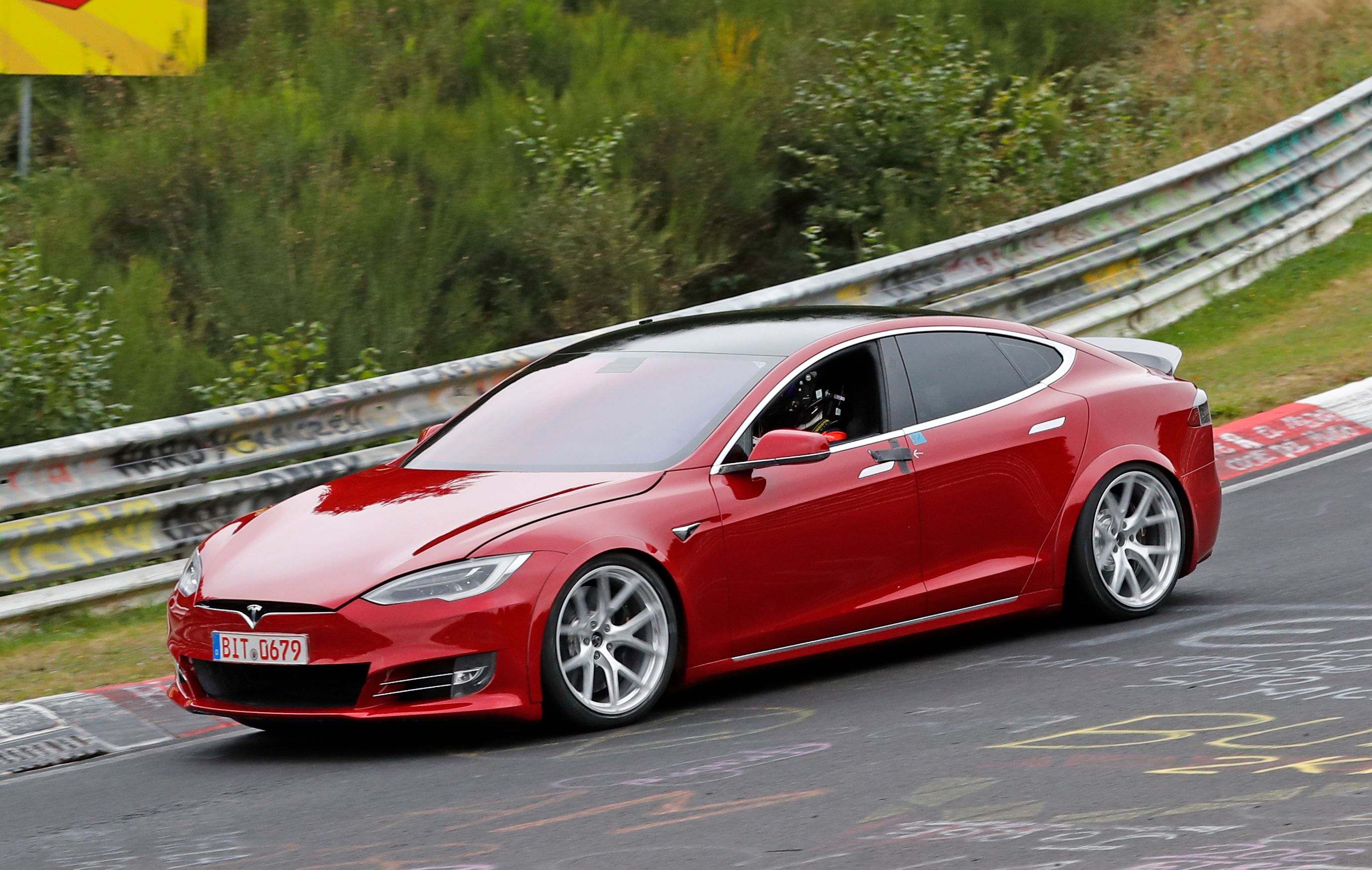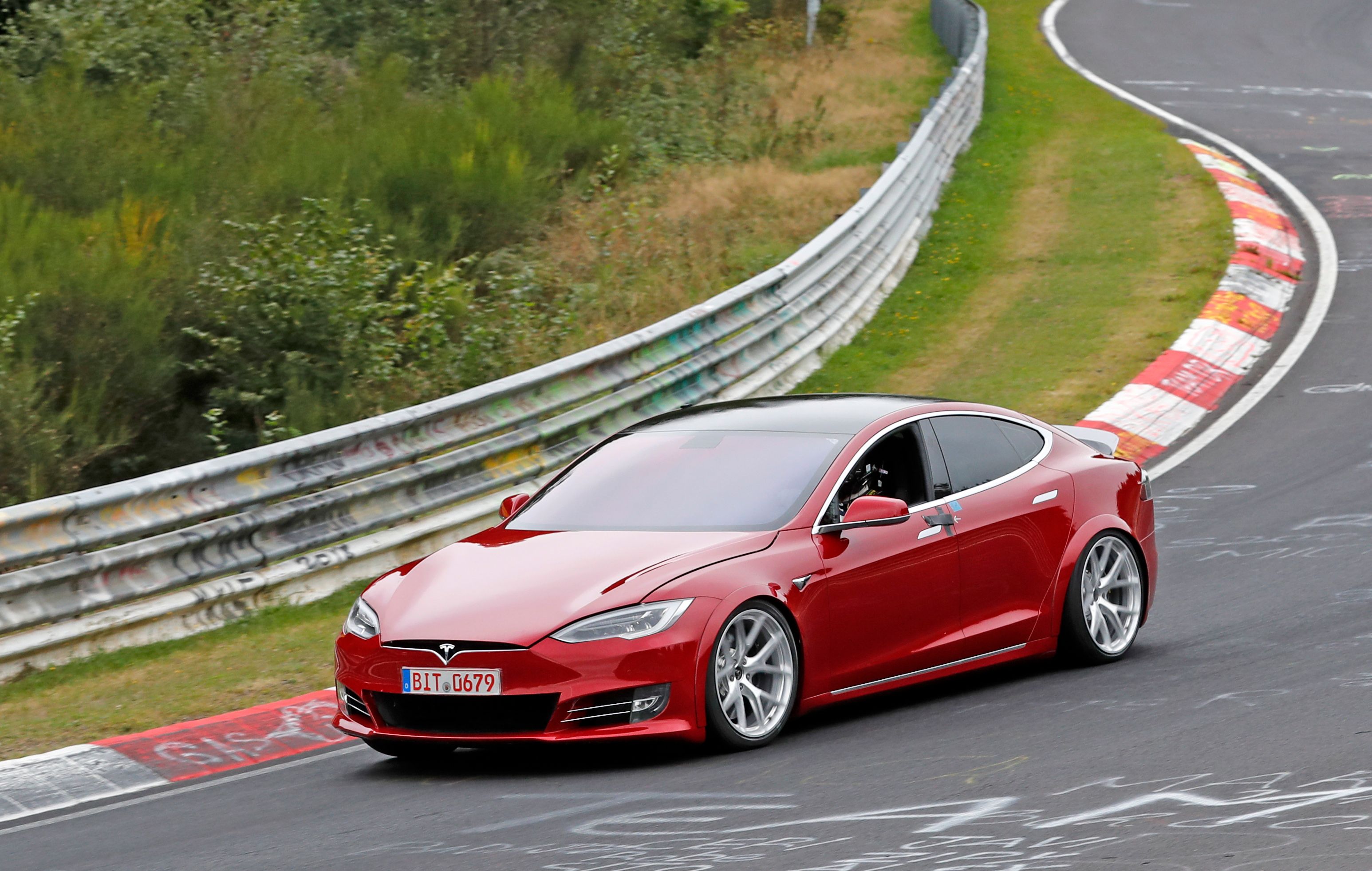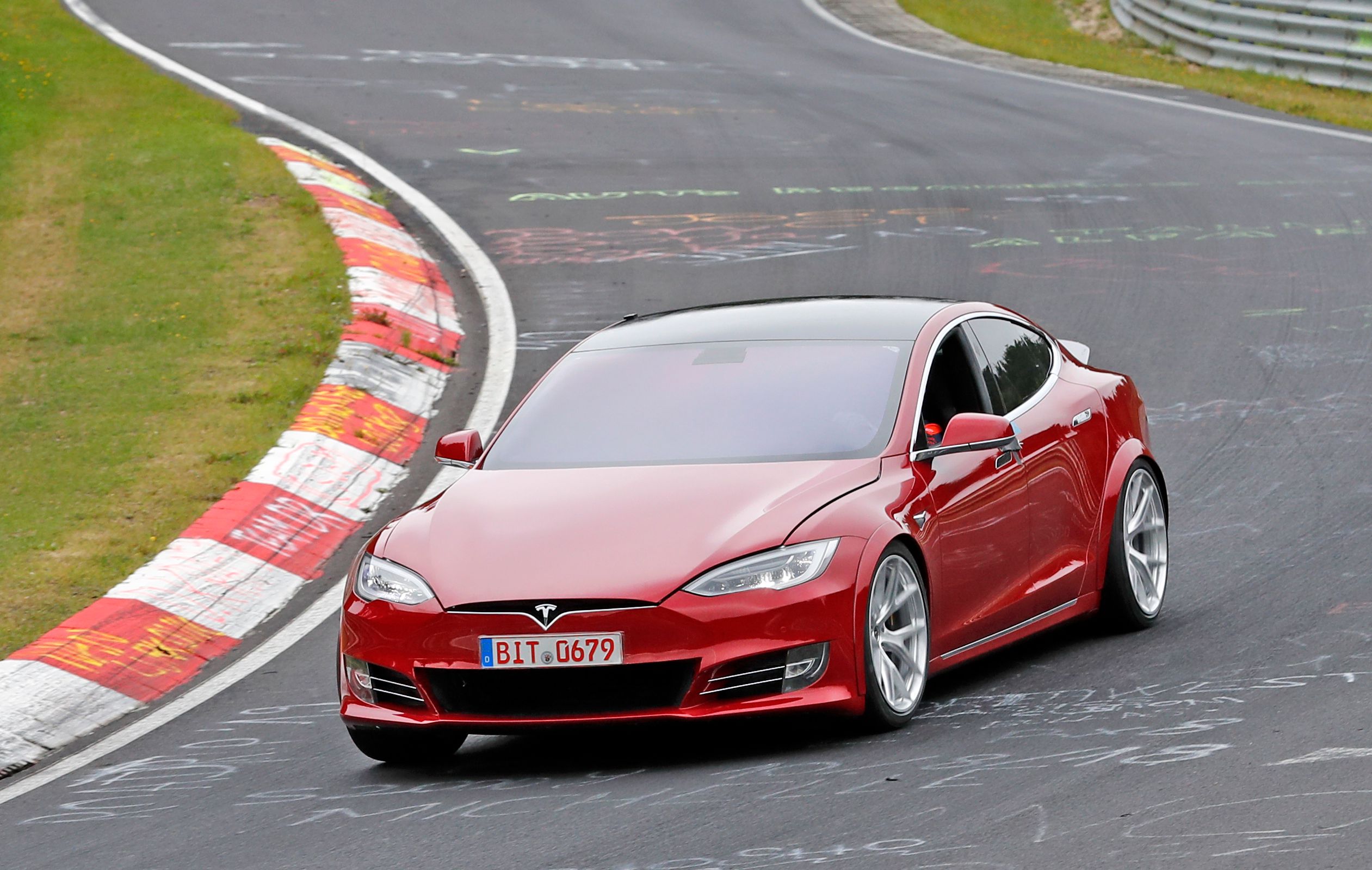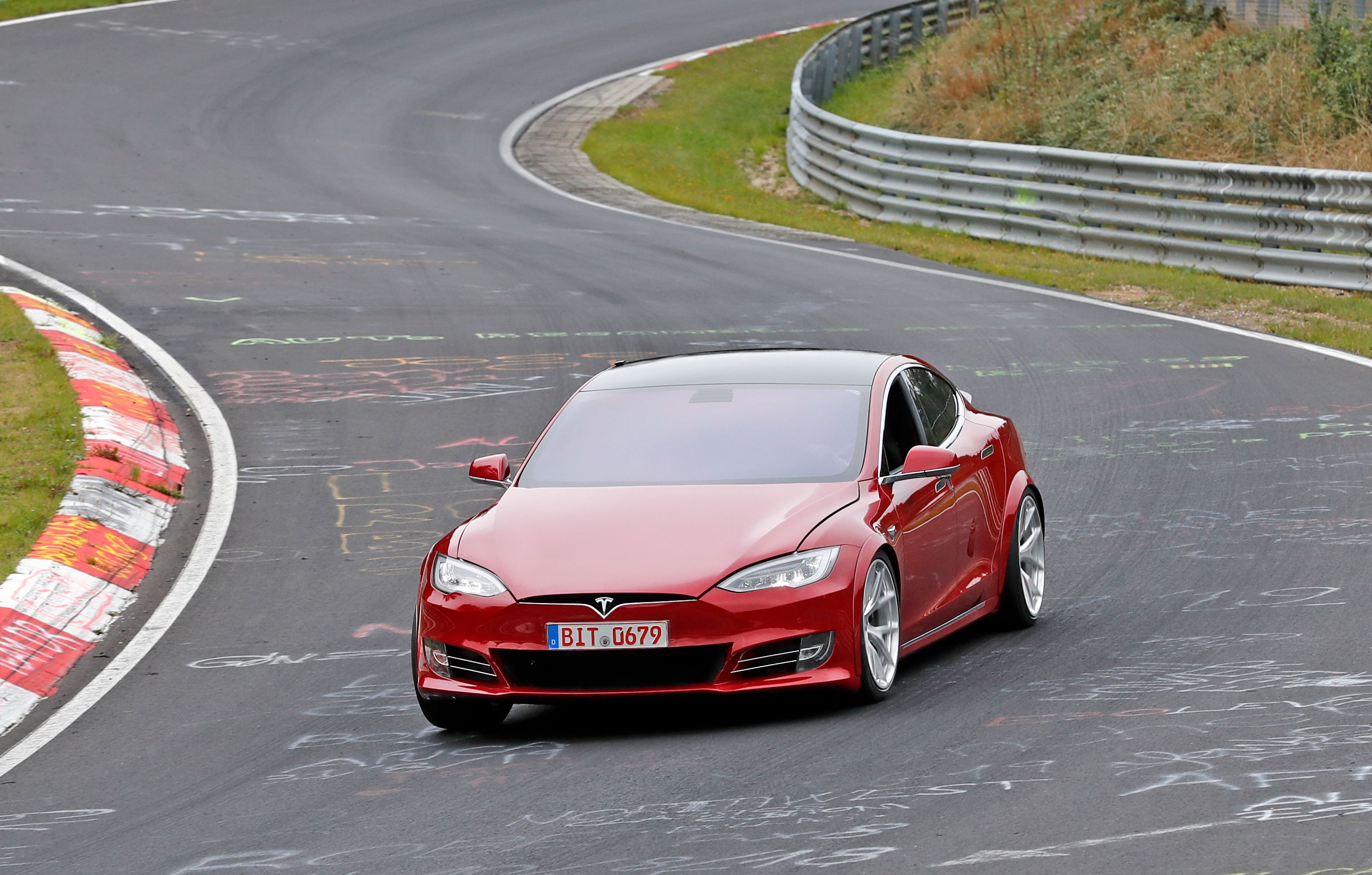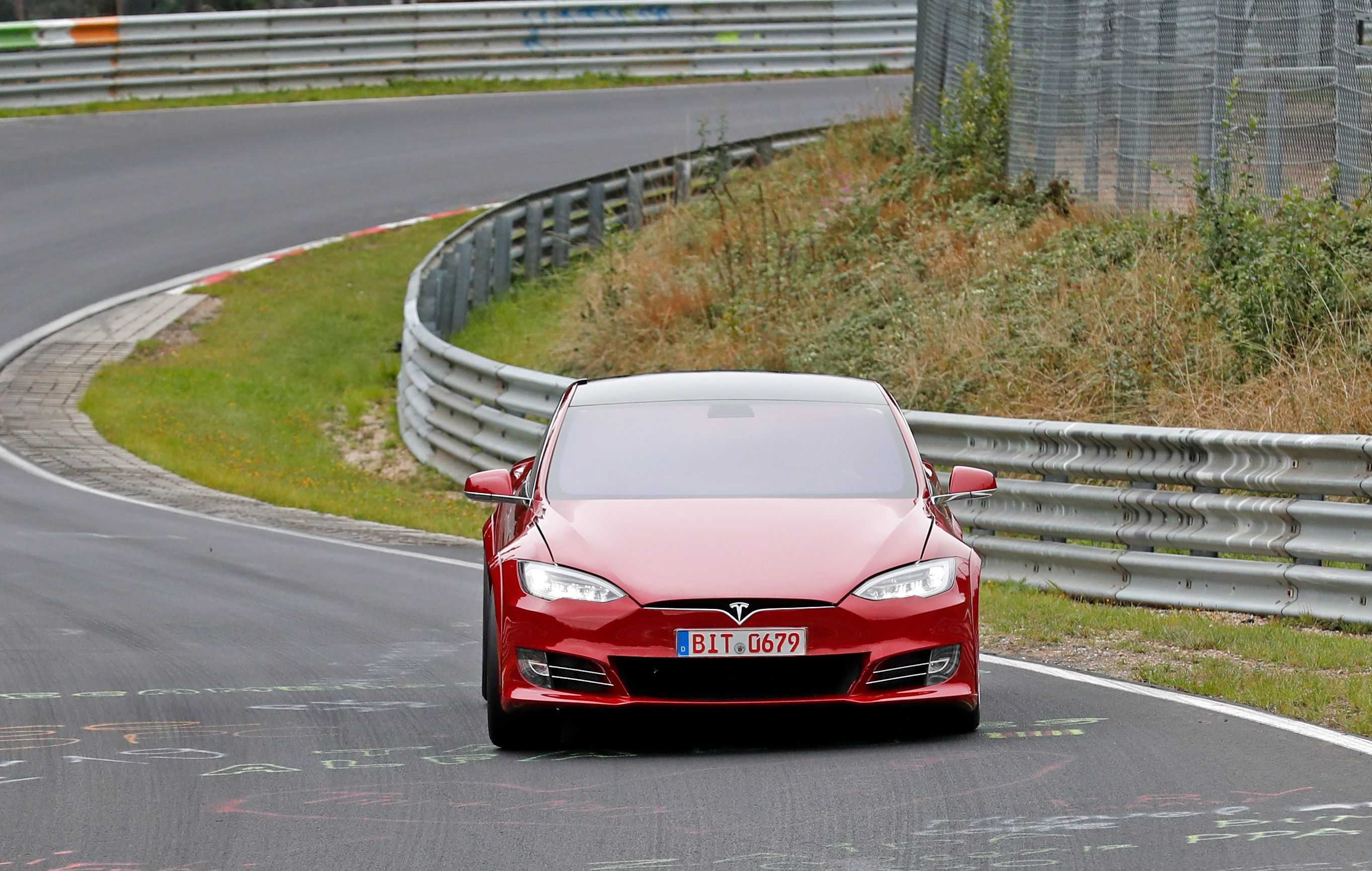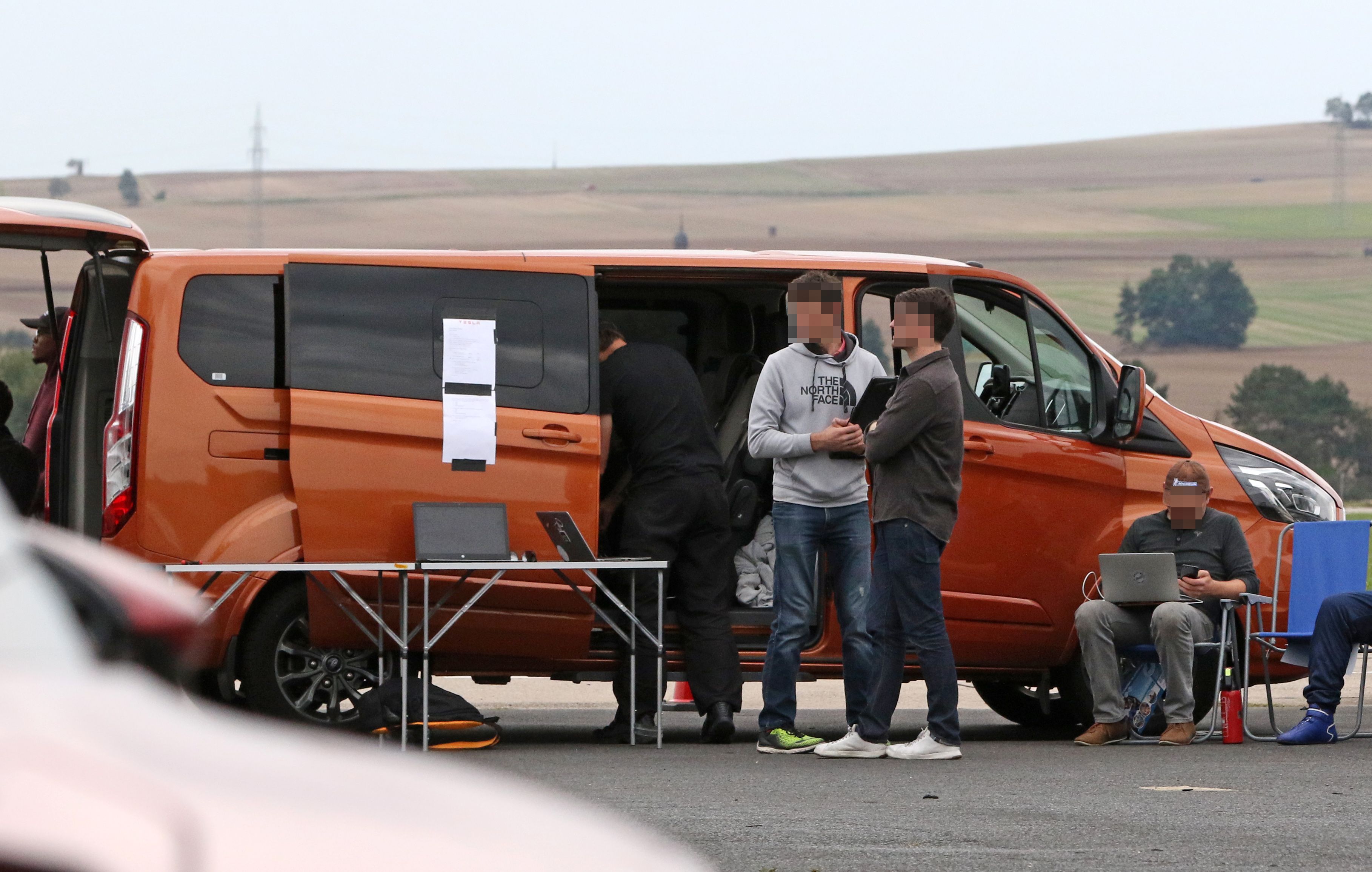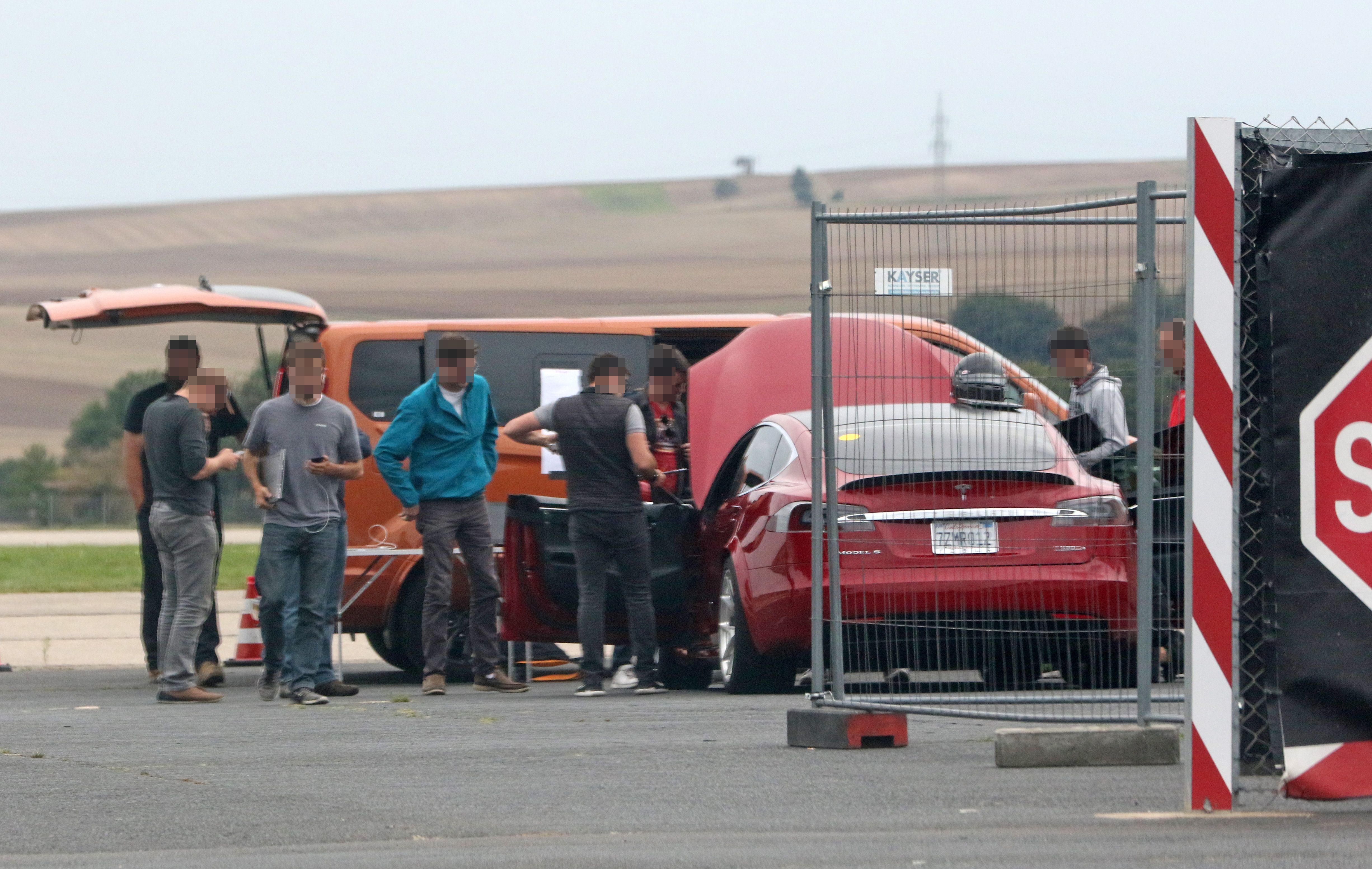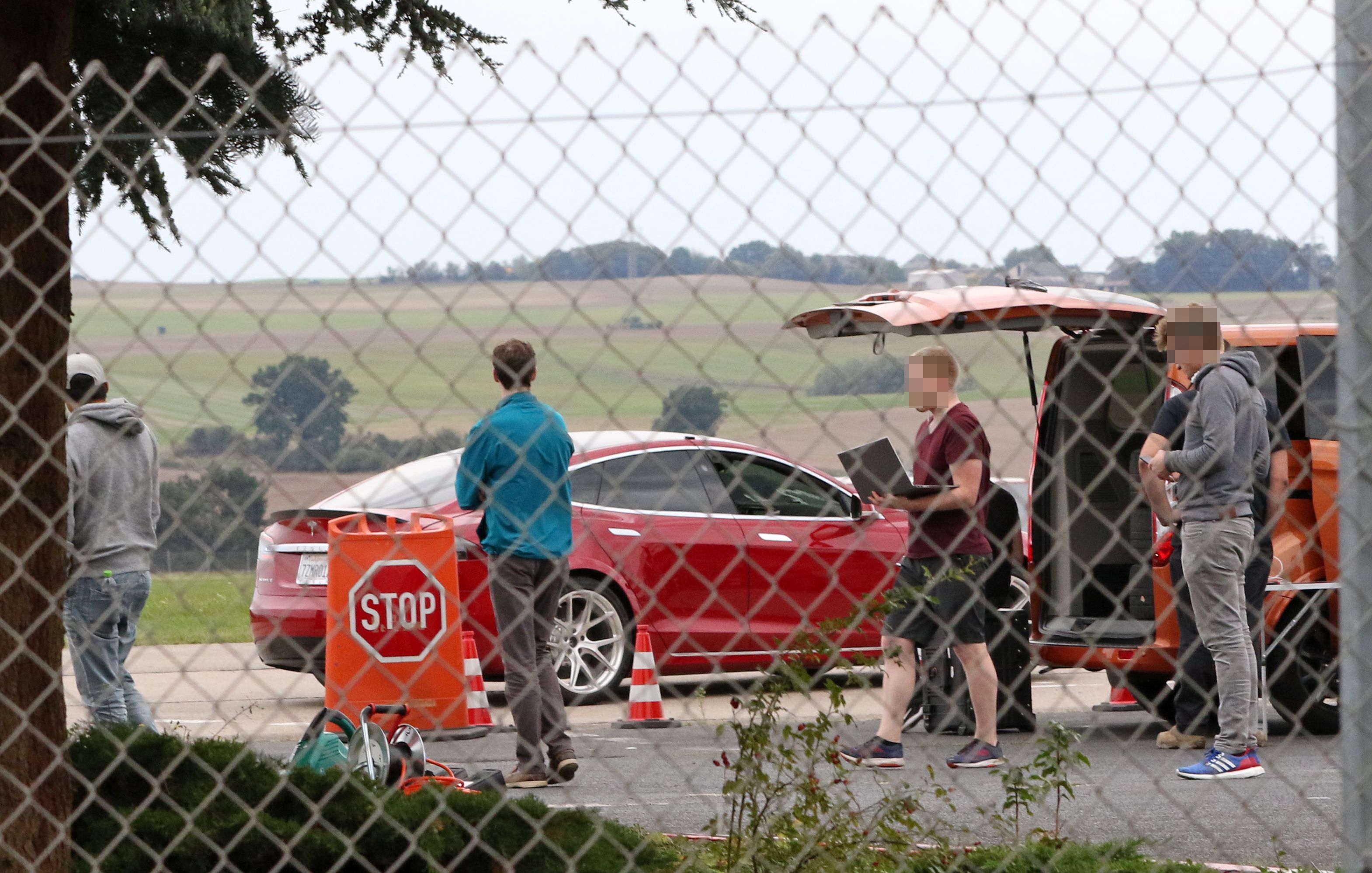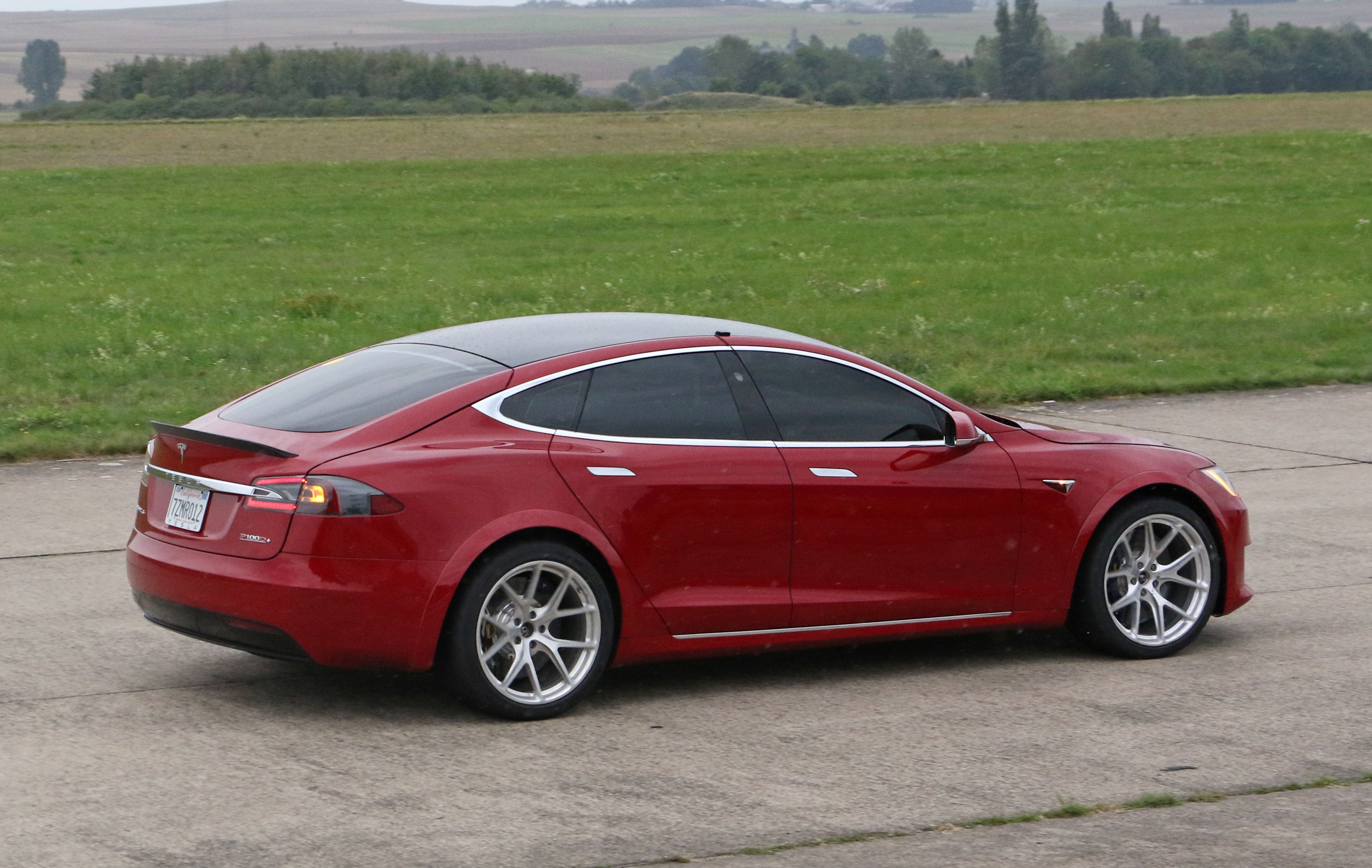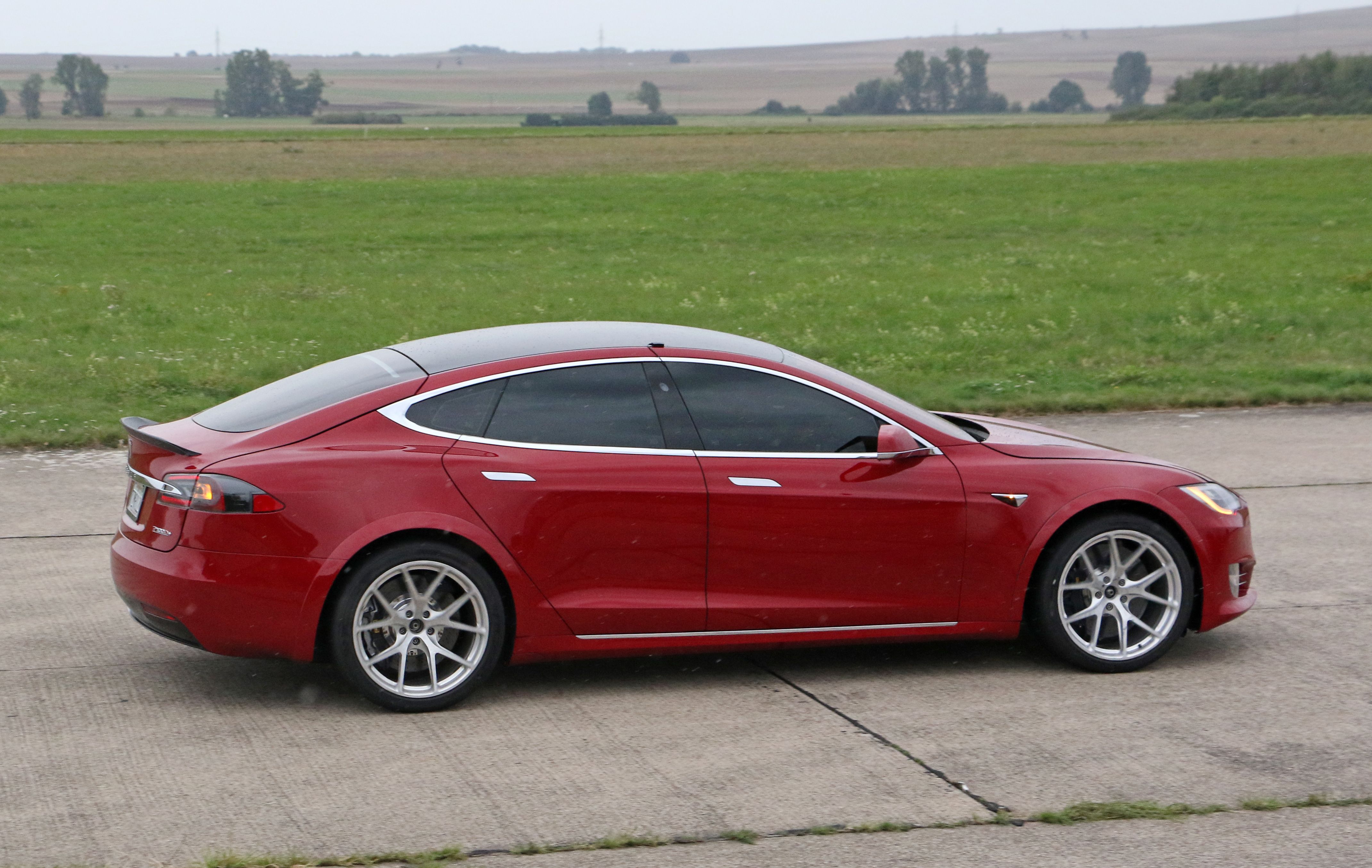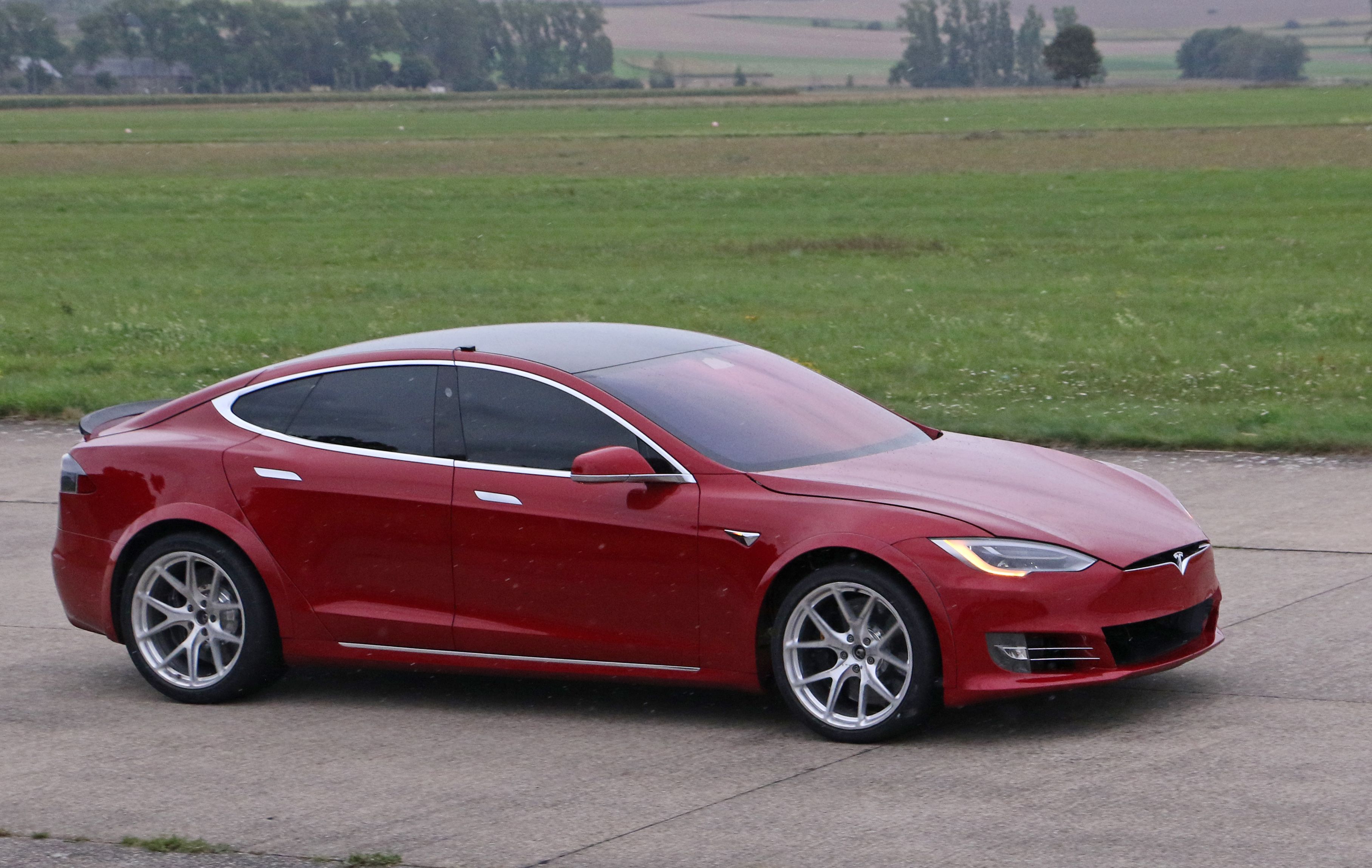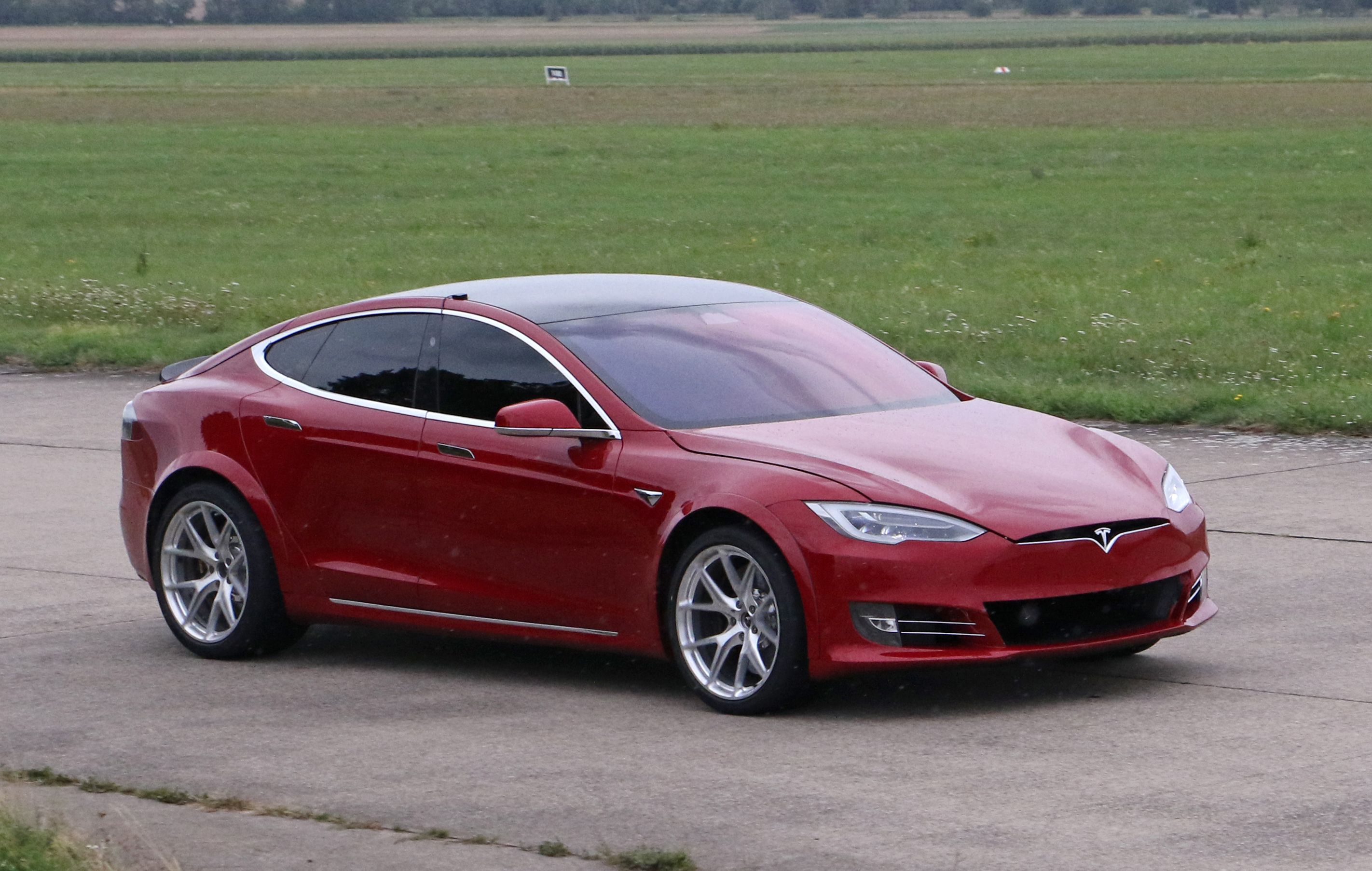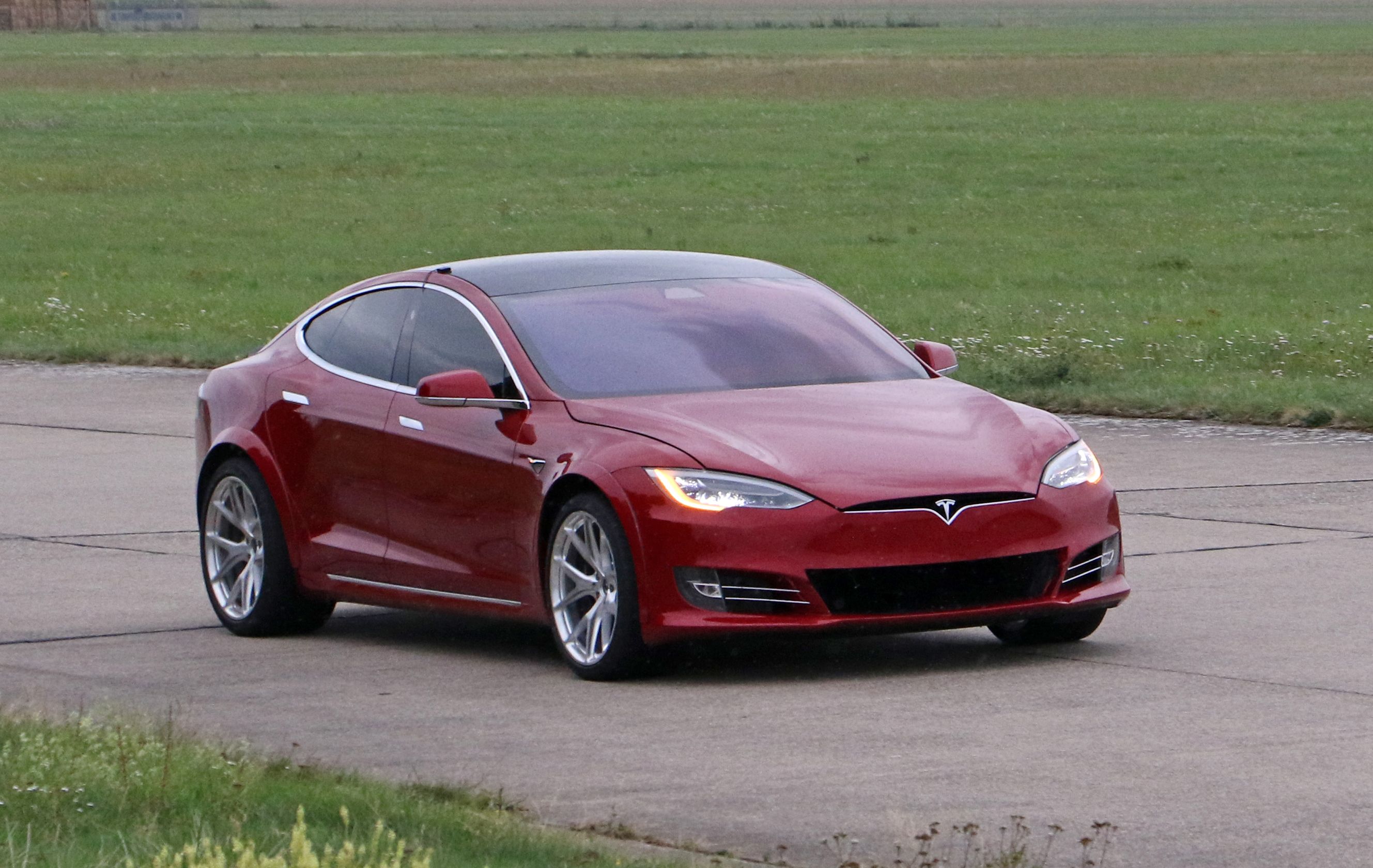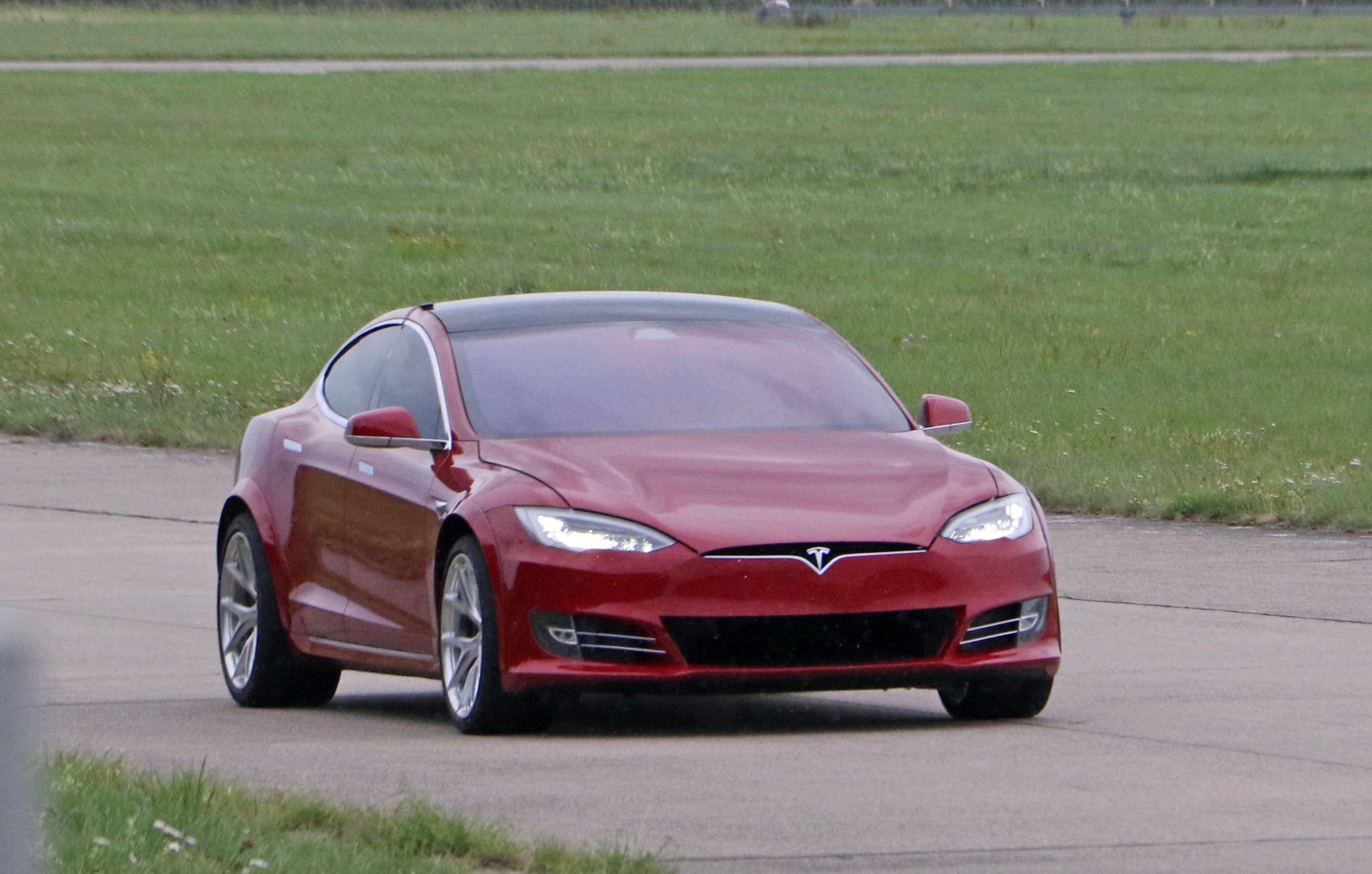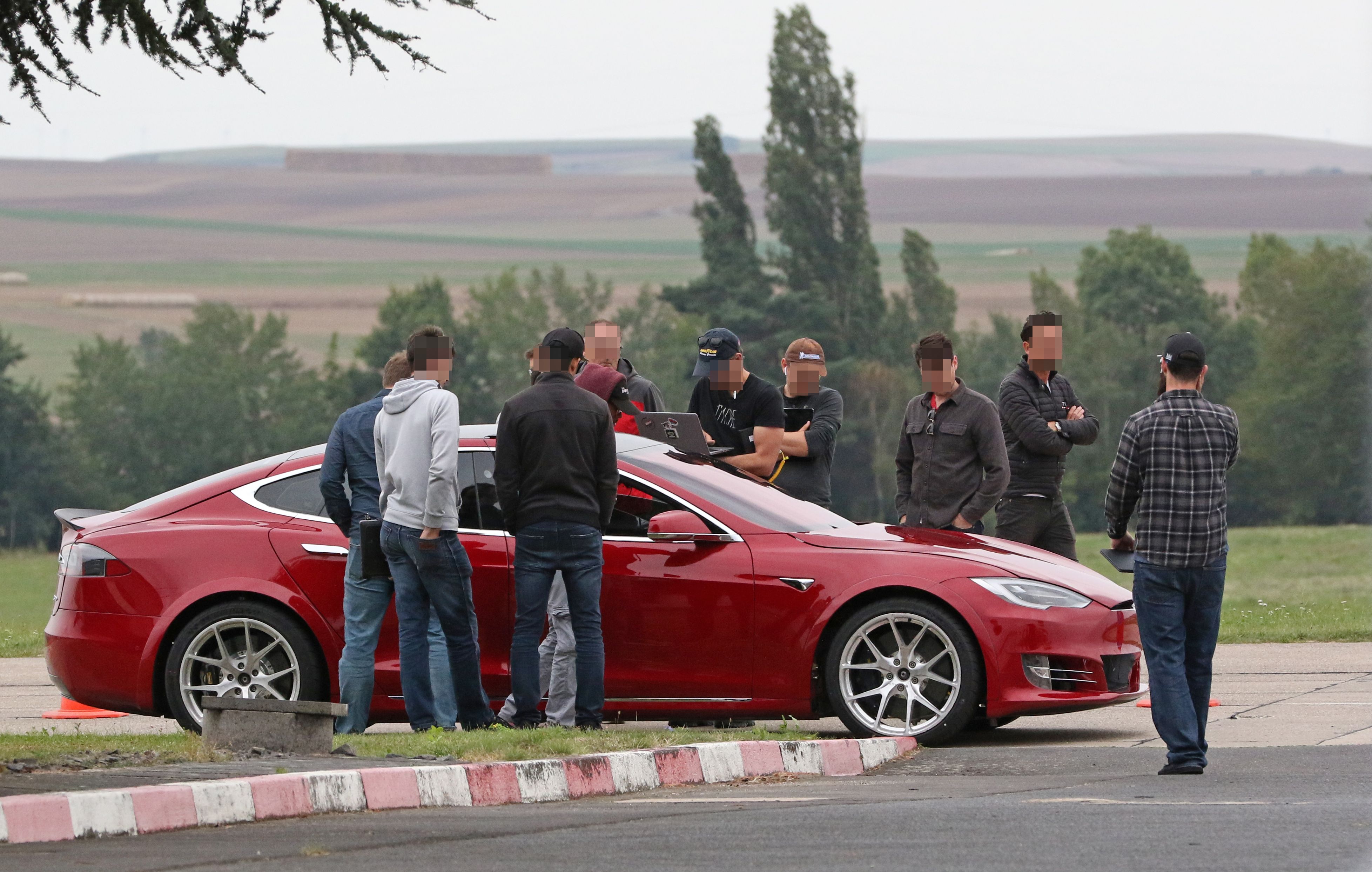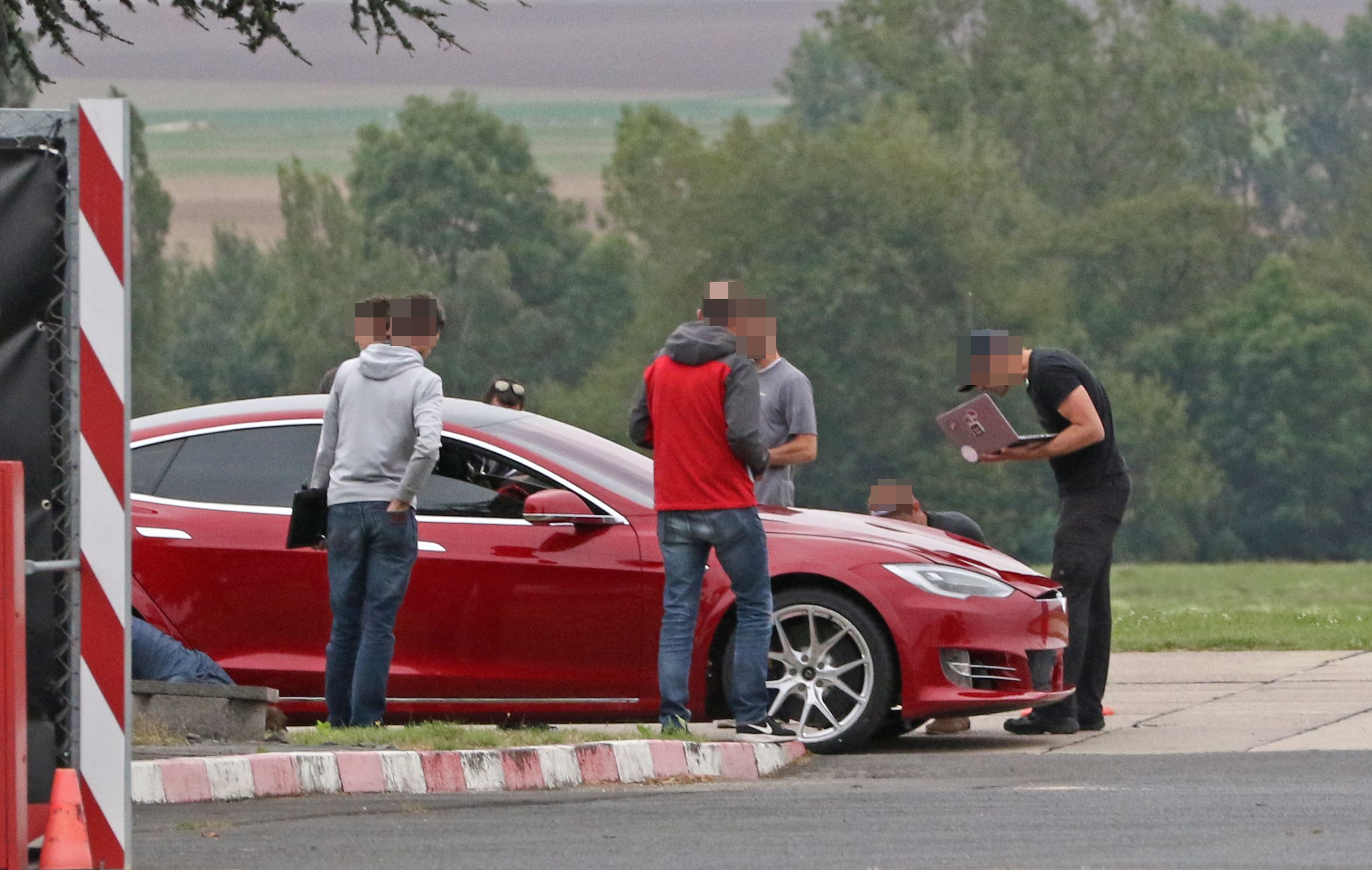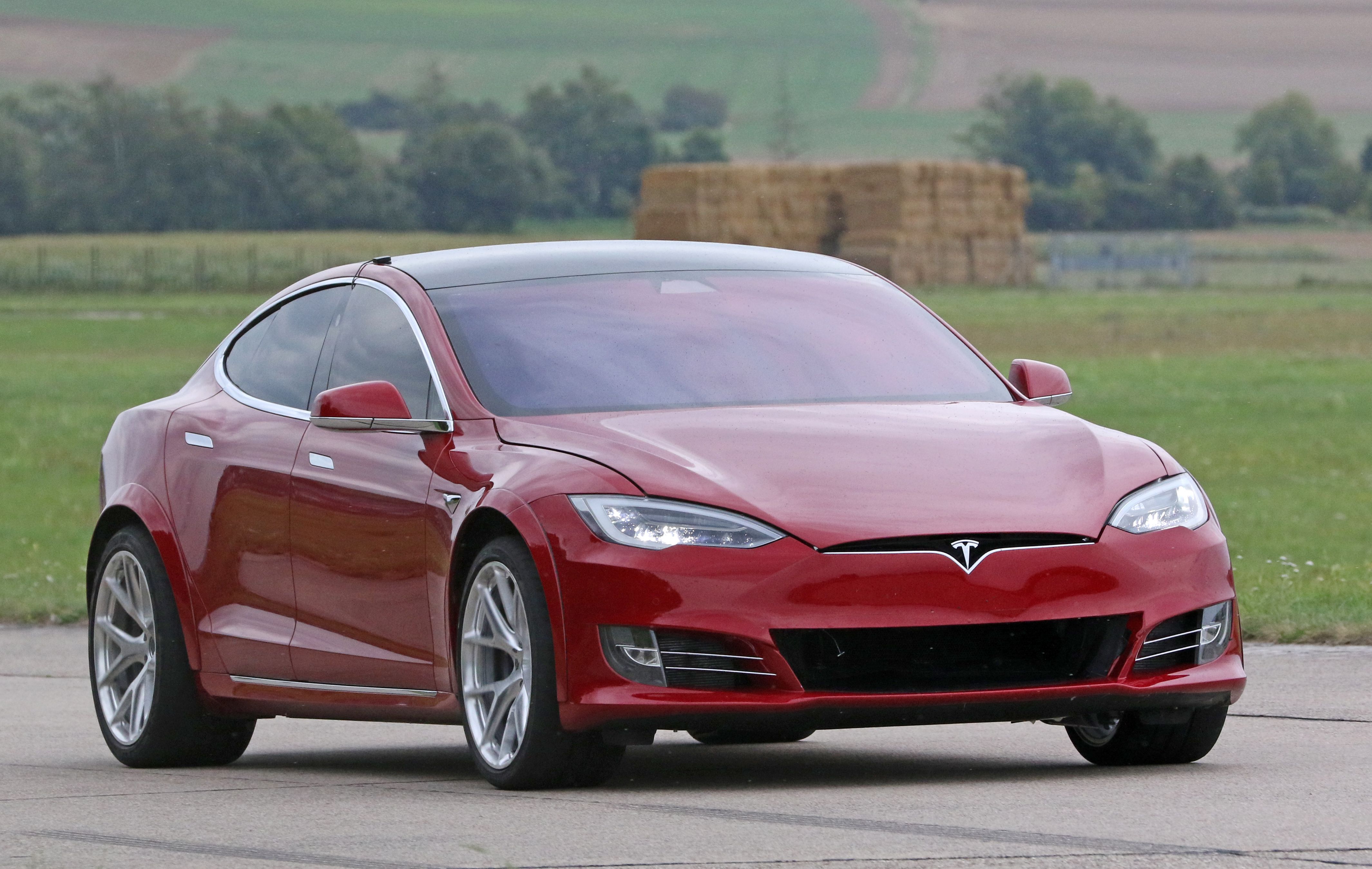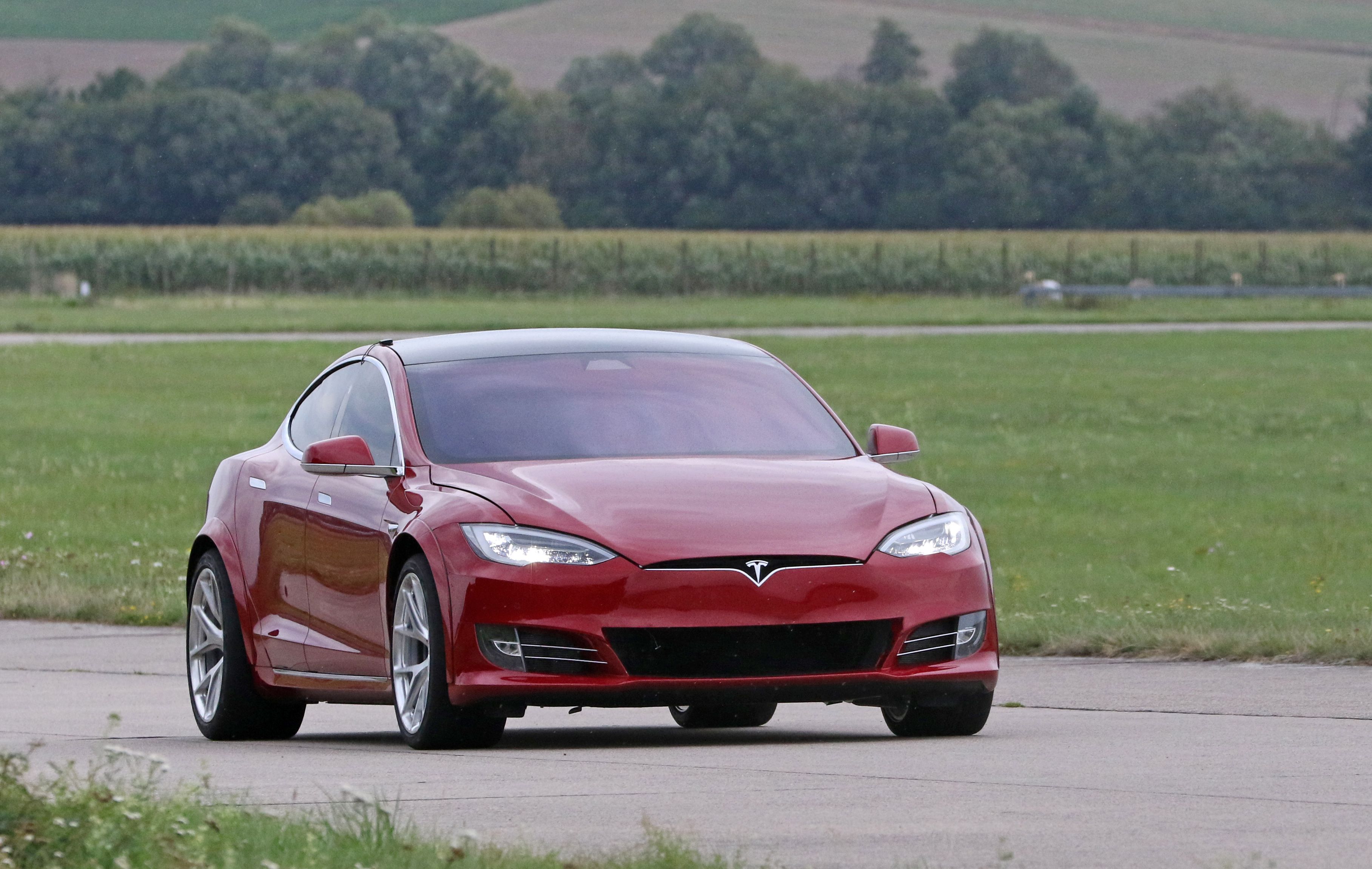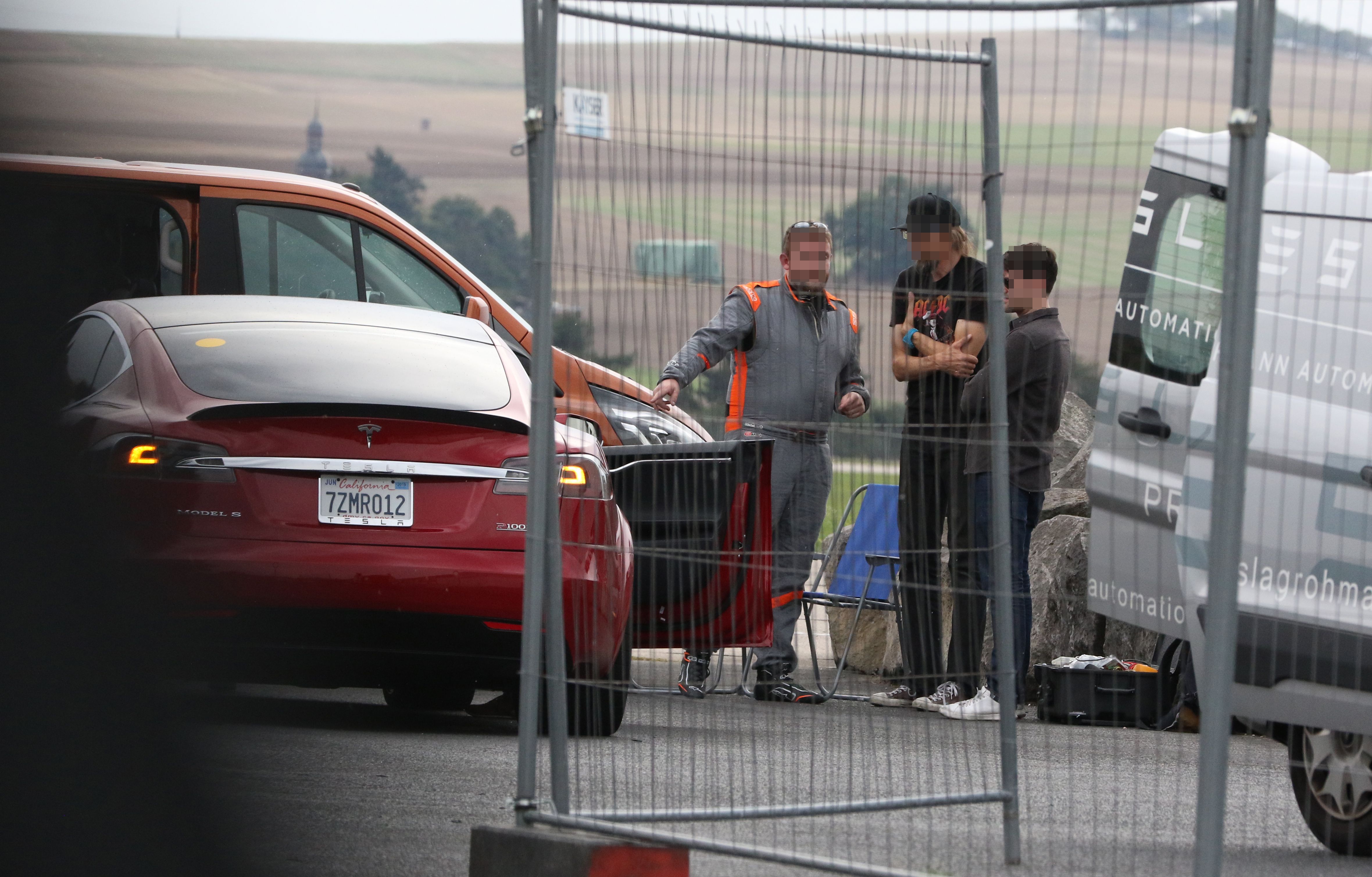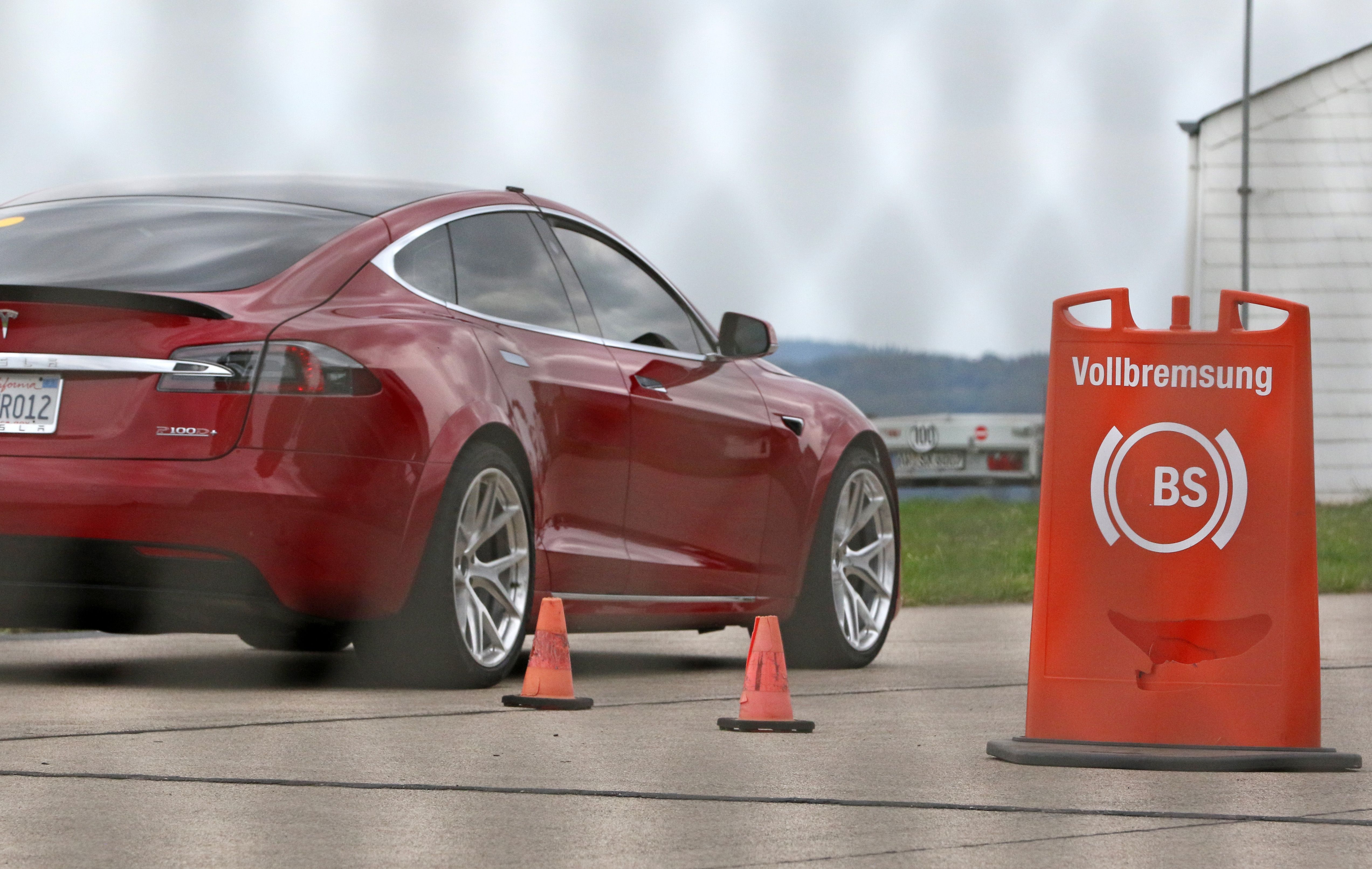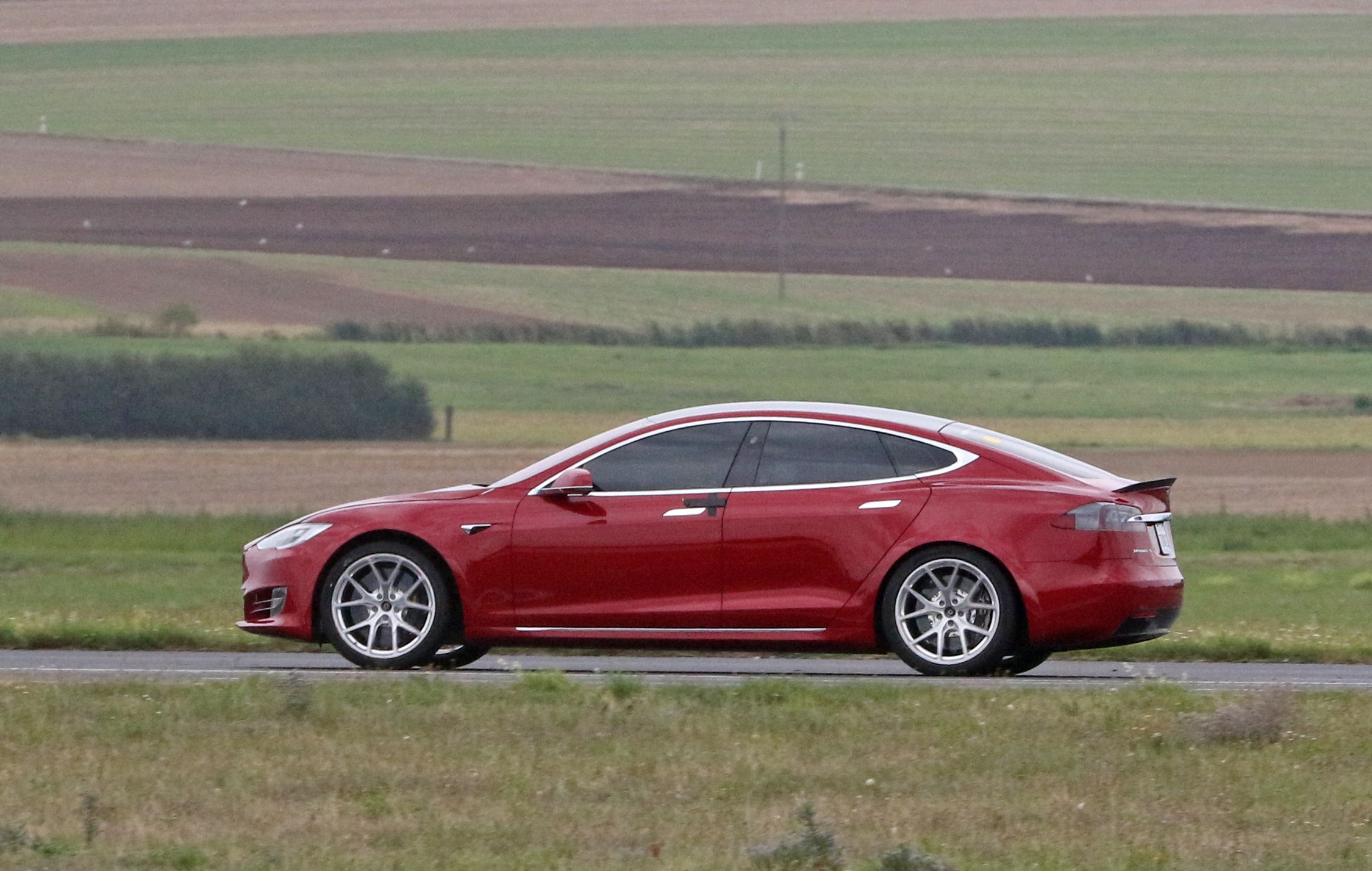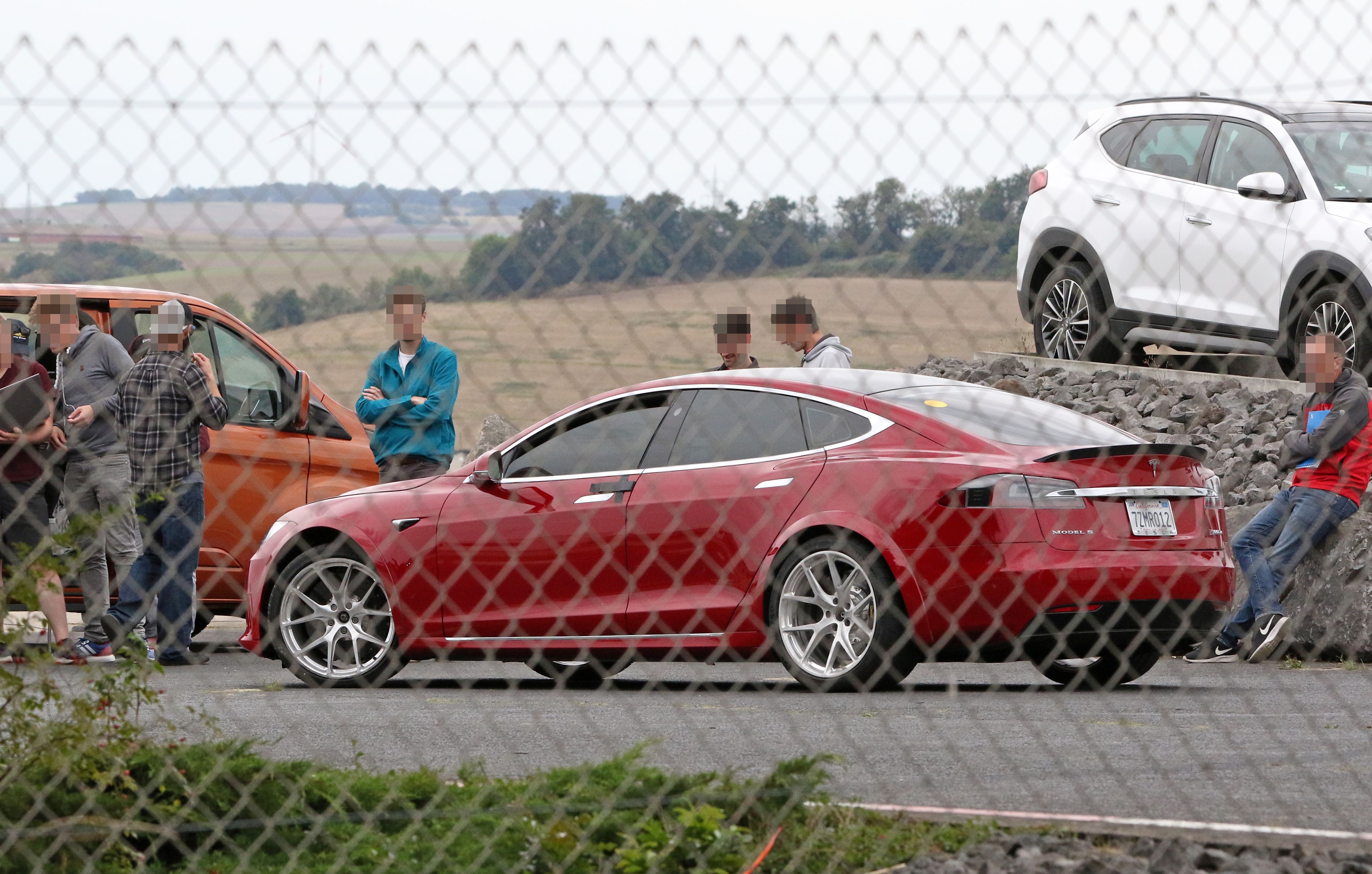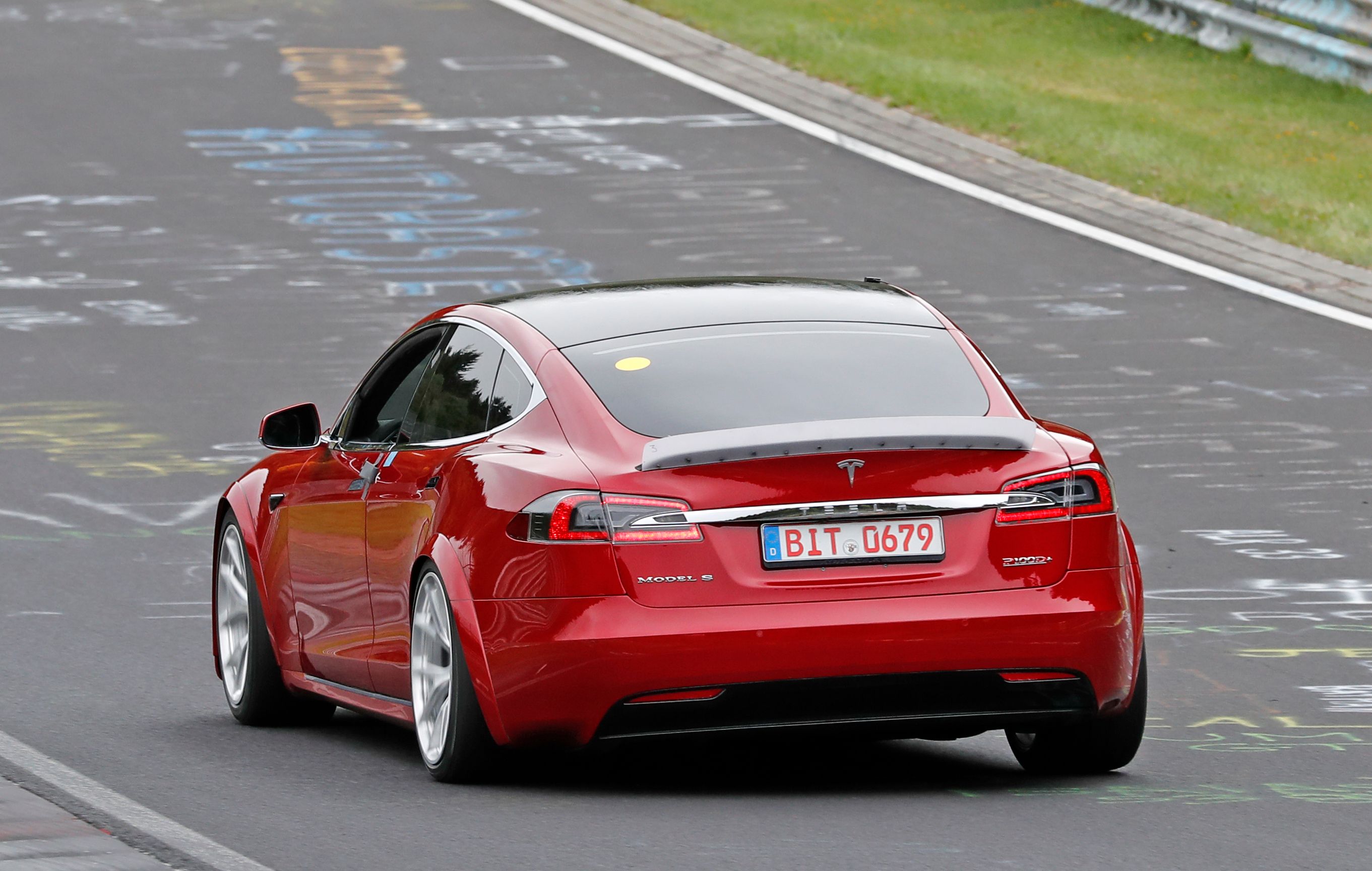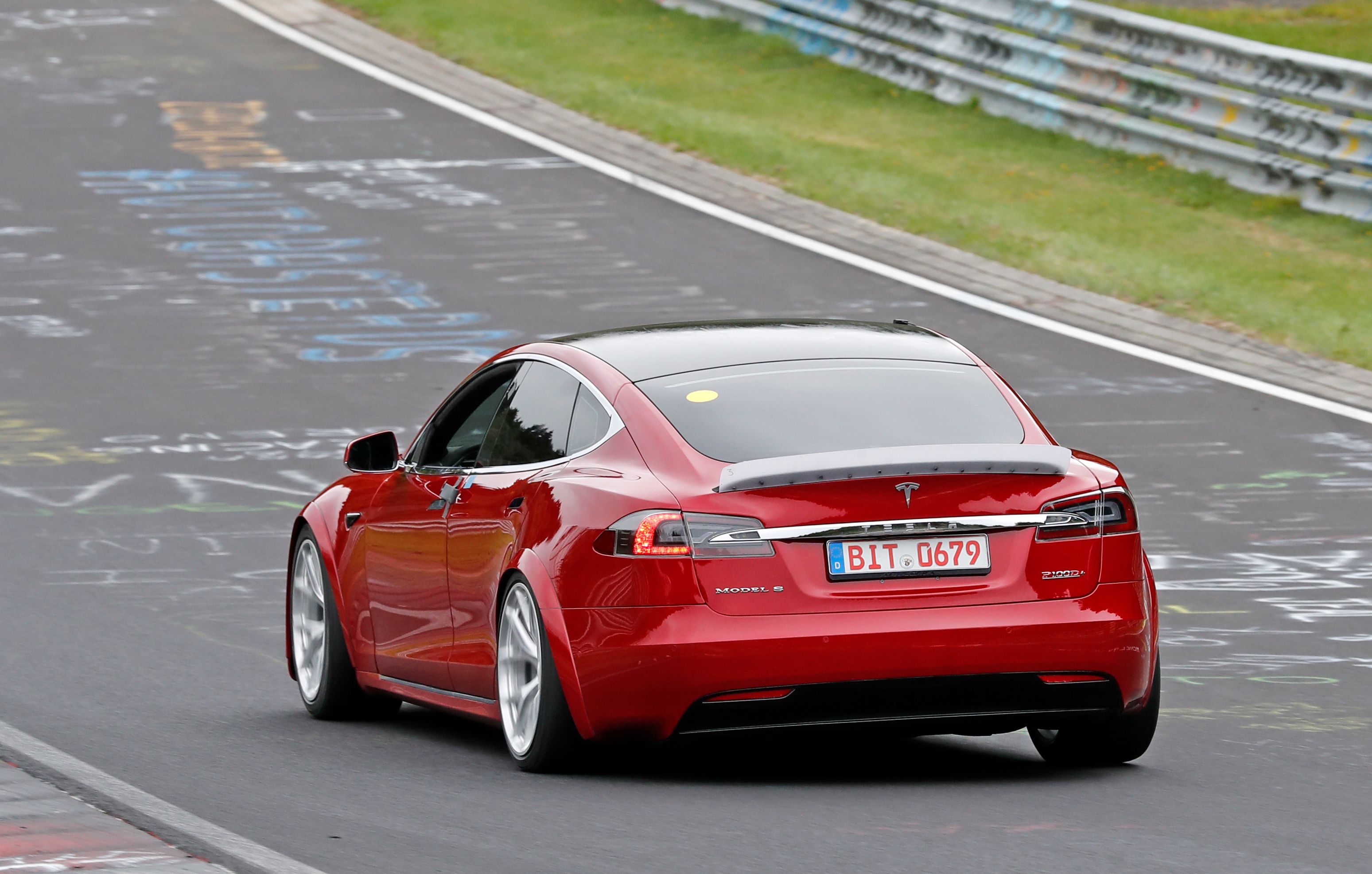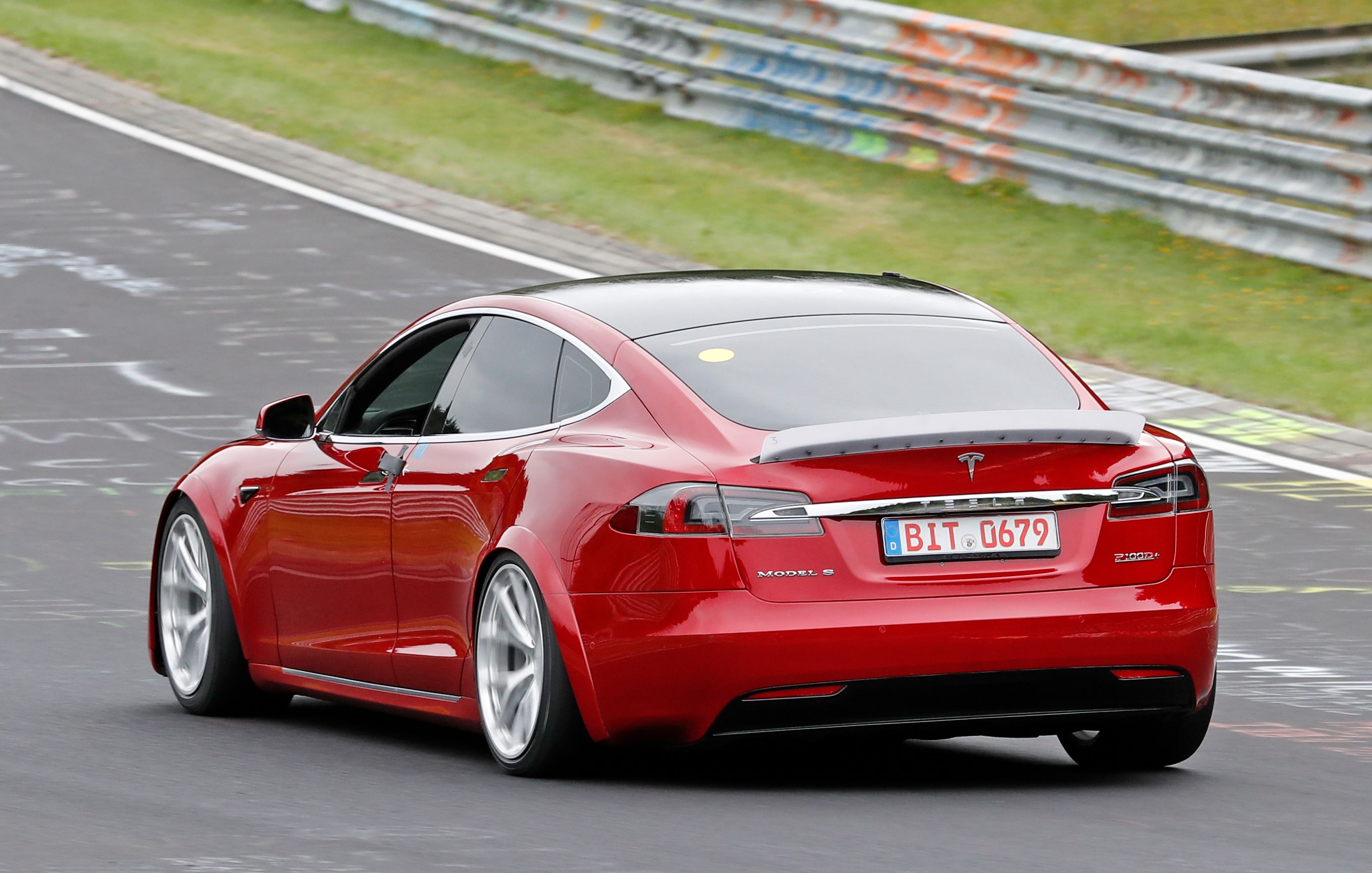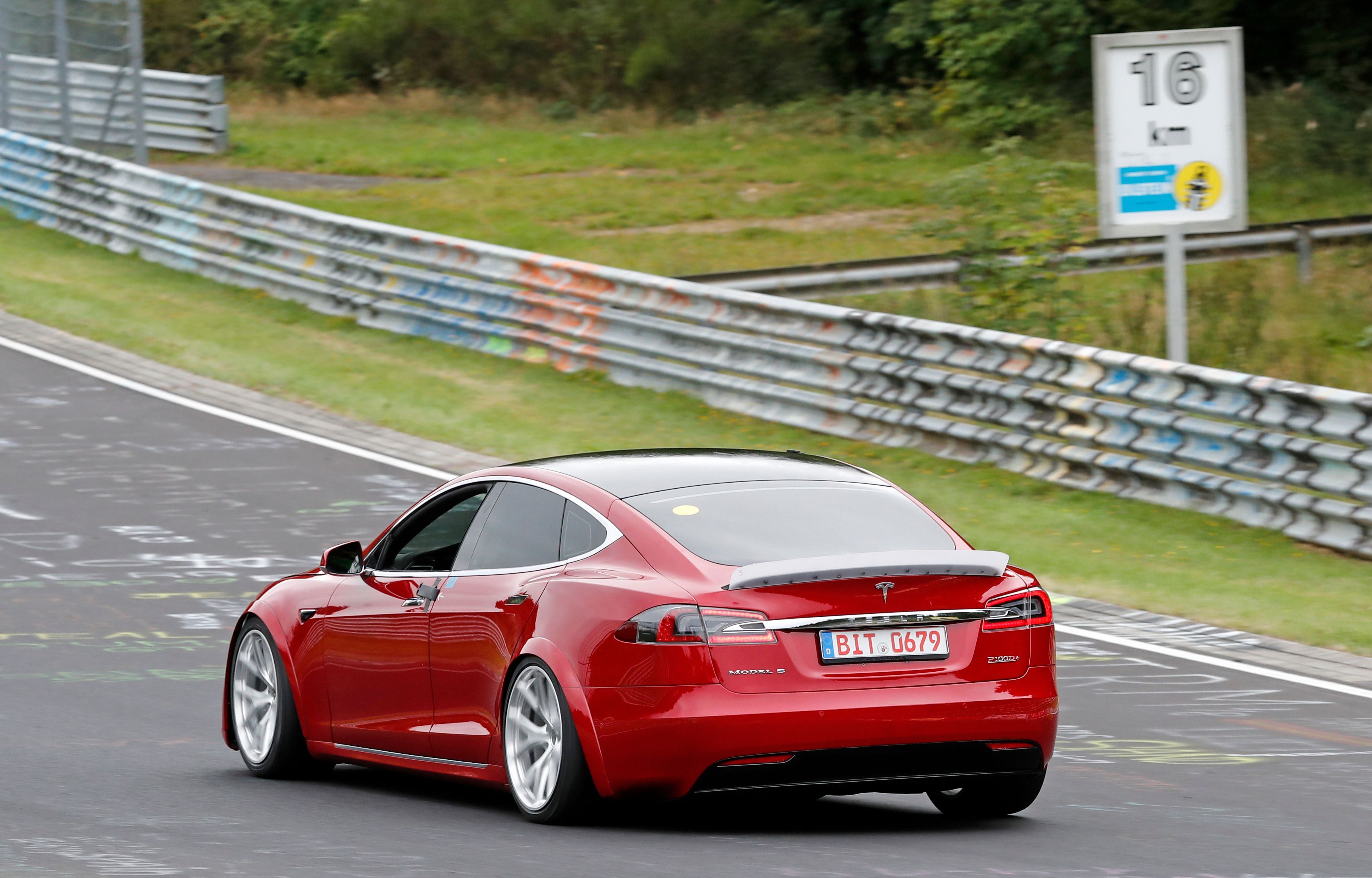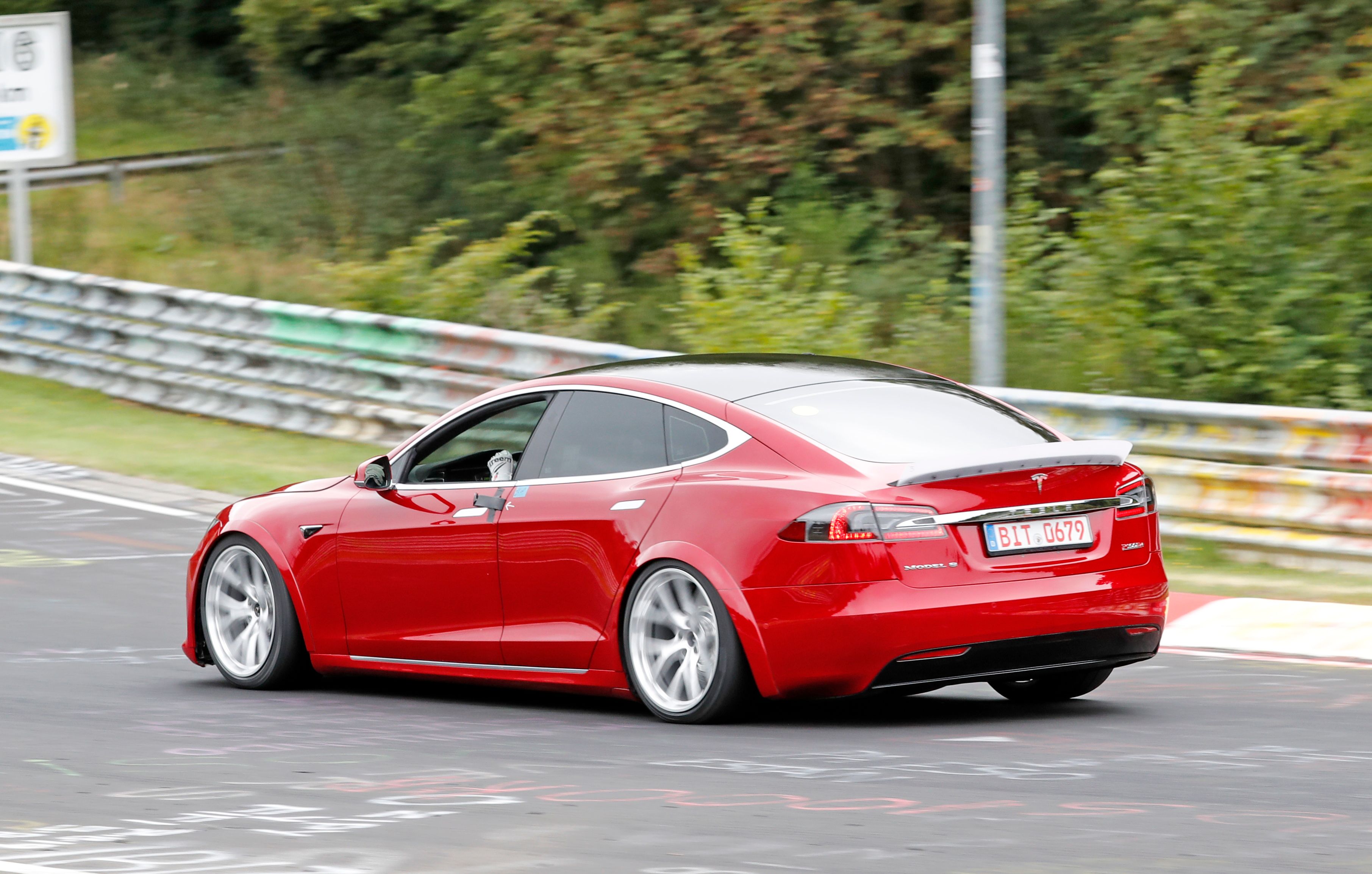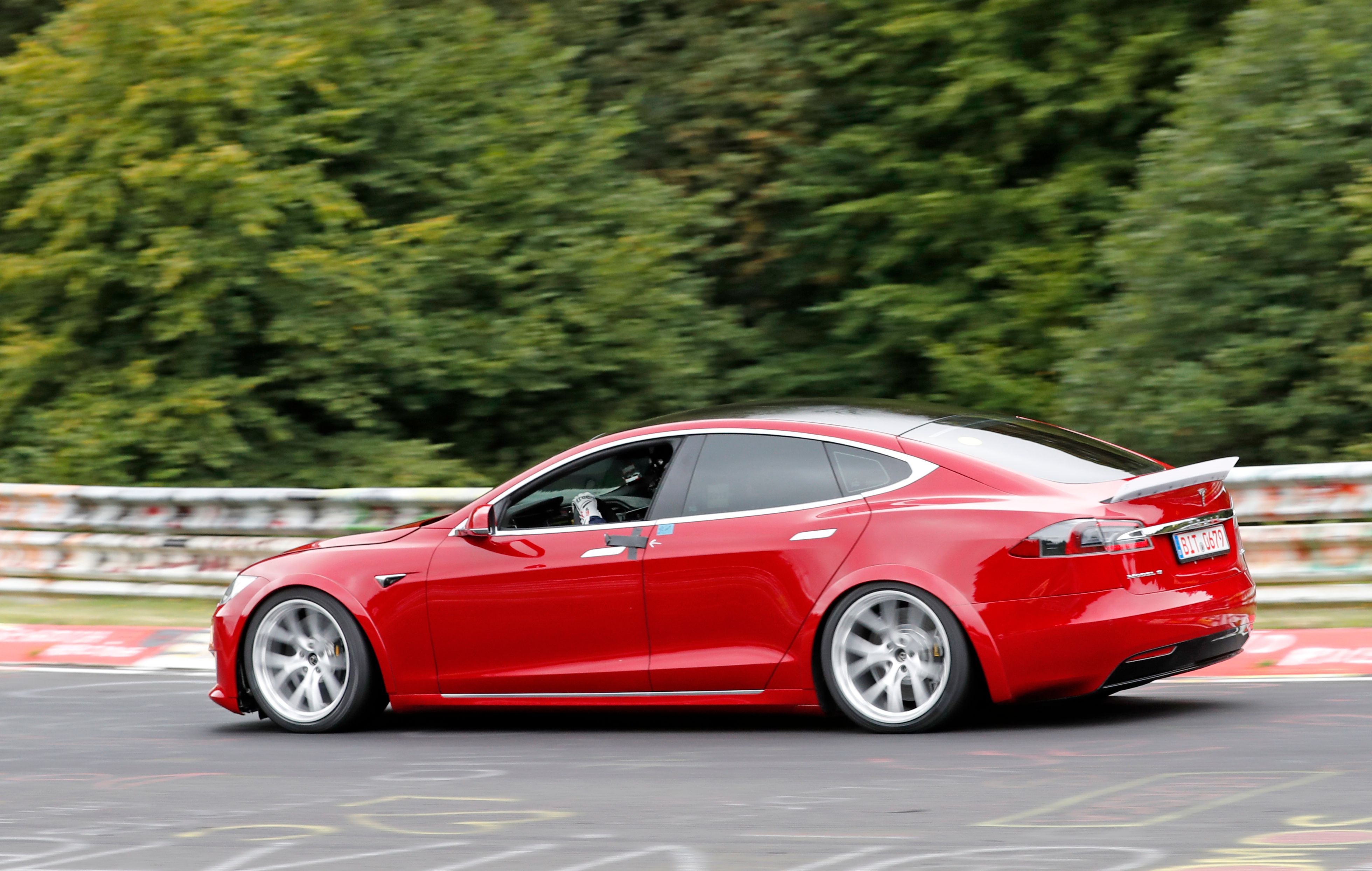The Model S is far and away Tesla's most popular vehicle, known for singlehandedly shifting public opinion of EVs from dowdy, boring people-movers, to sexy, high-tech performance machines. This is the model that set the stage for all of Tesla’s other offerings, including the top-shelf Model X SUV, and more recently, the affordable Model 3 compact four-door. However, the Model S was first introduced in 2012, which means it’s starting to get a little long in the tooth, and a second-gen for the full-/mid-size luxury sedan should be headed down the line in the next few years. As such, we put on our speculation hats and got down to reasoning out what the next Model S might bring to the table.
Update 9/12/2019: The Tesla Model S 100D + Plaid was spotted going through the paces on the Nurburgring today in preparation for a new record attempt to dethrone the Porsche Taycan. Check out our special spy shots section below to see the first images and learn more about what could represent the next significant update to the Tesla Model S.
2022 Tesla Model S
- Make: Array
- Model: 2022 Tesla Model S
- [do not use] Vehicle Model: Array
Spy Shots
September 12, 2019 - Tesla Model S 100D+ Plaid Testing on the Nurburgring
It’s very unlike Tesla to be seen on the ‘Ring with a prototype, yet here we are in 2019 looking at a widebody Tesla Model S preparing for a record-setting run over the Green Hell. We know very little about the car itself, but as you can see from the images above, it sports much wider tires and, as such, requires wider fenders as well. There’s also a much larger opening in the front bumper, probably to channel extra air to the electric motor up front and help keep the battery pack cooled under such a heavy load. Finally, there’s also a spoiler in the rear to help add some extra downforce. What we don’t know, however, is what kind of power output this specific model has. Did tesla tweak the motors and battery to deliver range-killing power just to make this record-setting run? Is it the same configuration as that of the current P100D with some minor tweaks here and there?
Either way, it wasn’t that long ago that Elon Musk said there wouldn’t be any major updates to the Model S in the foreseeable future. So, a next-generation model isn’t going to happen anytime soon. But, there will be an update to help modernize the current design – much like there was back in 2017 – the model used here in attempt to set a record could lend some hints as to what we can expect from that model or an even crazier model that could be released in the future. Until then, enjoy the gallery of spy shots we’ve added to the gallery at the bottom of this page and enjoy this speculative review that was written back when a next-gen Model S was expected.
2022 Tesla Model S Exterior Styling
This latest rendering you see here comes courtesy of Emre Husmen, an Industrial, Automotive, and Product Designer with obvious talent in creating some truly superb-looking art.
To help predict what the second-generation Model S might look like, Emre took cues from the outrageous second-gen Roadster that Tesla introduced back in November of 2017. The overarching layout once includes a five-door fastback body style, but also incorporates a variety of sharp creases and cuts that lend it even more aggression.
Up front, the fascia shows off the Model S’ wide, low stance, with minimal intakes and openings required to keep the EV powertrain cool. The headlights are much slimmer than before, stretching back into the front fenders and a mean-looking angle. Lower elements for the housings give the headlights a C-shaped design, with laser lighting elements adding forward illumination, and half hexagons adding a splash of extra style as well.
Viewed in profile, the new Model S looks quite mean indeed. The front overhang is short, while the rear end sticks out a bit from the axle, giving the whole thing very attractive proportions. Enhancing this is a set of well-rounded fenders up front, while the rear fenders rise up to meet the belt line and add extra beefiness as well. Under the wheel wells, you’ll find plus-sized alloy wheels ranging up to 21 inches in diameter.
We’re also rather fond of the rendering’s sharp character lines along the doors and lower side skirts, both of which add even more visual impact to the design. The C-pillars in particular have us staring in lust.
Moving around to the rear, we find a Kammback style tail, which is flattened down from an up-flicked spoiler section. The rear hatch incorporates a large section of glass, while the taillights wrap around from the rear fenders to a dividing line that sits at the same level as the profile’s shoulder line. Air vents are visible just behind the rear wheels, while a black diffuser element eases atmosphere from underneath the car in a sleek, unobtrusive fashion.
In the rear, we also find a chrome connector for the taillights and OLED’s for illumination purposes. The acronym “OLED” stands for organic LED, and the technology allows the the taillights to change their color depending on whether the driver is reversing, braking, or indicating a turn.
All told, we expect the next Model S to be extremely aerodynamic. The current model has a confirmed coefficient of drag (Cd) set at 0.24, which is one of the slipperiest Cd’s on the market today.
The next model should post at least a 0.24 as well, although considering the push for ever-improved performance, it could definitely do even better. A 0.2 might be well within reach by the time the second-gen Model S hits the scene.
A slippery profile is crucial when it comes to performance and range, both of which are characteristics that are vital to the modern EV. Each element, from the front splitter, to the rear diffuser, to the side skirts, should come perfectly honed to slice through the air with high efficiency. Even the door handles will be recessed into the door panels to help it in that regard.
Of course, it bears mentioning that this particular rendering isn’t necessarily optimized for aero efficiency, hence all the swoops and cuts in the body panels. Granted, these things probably won’t see inclusion in the production model, but we think they look great all the same.
Underneath the fresh body work, the Model S will most likely come equipped with a carbon fiber chassis to keep the curb weight as low as possible. If it doesn’t get a full carbon chassis, then the new Model S will definitely have additional composite pieces compared to the outgoing model, all in the name of more speed and more miles per charge.
For now, the Model S measures in with a wheelbase of 116.5 inches, while the overall length comes to 196 inches, overall width is at 86.2 inches, front track is 65.4 inches, and the rear track is 66.9 inches. Per tradition, we would expect the next generation to grow slightly in some (or even all) of these dimensions. That’s especially the case with regards to the length, width, and wheelbase, all of which might need an inch or two to help it stand out in the luxury segment.
2018 Tesla Model S Exterior Dimensions
|
Wheelbase |
116.5 inches |
|
Overall Length |
196 inches |
|
Overall Width |
86.2 inches |
|
Front Track |
65.4 inches |
|
Rear Track |
66.9 inches |
2022 Tesla Model S Interior Design
Take a step into the next-gen Model S, and you’ll find an all-new interior design, something that brings a bit more drama and style than the somewhat sterile aesthetic seen in the Model 3 and current Model S.
Of course, there should be plenty of overlap from the old model as well, most notably on the center console, where we find Tesla’s signature infotainment hub with an enormous digital screen to provide all the necessary user inputs. For now, the Model S comes with a 17-inch screen, but we think the next-gen could get something up to 19 inches in the diagonal measurement.
Regardless, we’re fairly certain Tesla will incorporate some OLED technology for the central screen as well, while the rendering also adds an OLED screen to the steering wheel. The steering wheel screen sections can be found to the left and right of the central Tesla logo, with touch-sensitive buttons for the infotainment system and driver assists. The wheel itself is also reshaped, moving from a simple flat-bottom wheel to a more geometric, octagonal setup.
Just like the current model, the next-gen will once again be super quiet inside, mostly thanks to the all-electric powertrain and low coefficient of drag. Drivers will enjoy the heated steering wheel, while both front and rear-seated passengers will dig the heated seats. And don’t forget the onboard air filtration system, which apparently has the capability to provide protection against a full bioweapon attack. So they say.
One thing folks will definitely look forward to will be the new-and-improved Autopilot feature, which by the time the next-gen Model S arrives should range up to full a Level 5 Autonomous capability. And that means the car will be able to drive itself from A to B without any human input whatsoever, basically acting as a totally self-driving transportation pod when desired.
That said, the Model S’ huge array of sensors will make it super safe should you decide to retake the wheel yourself, with standards like lane-keep assist, a blind-spot monitor, automatic braking, and more making it all as automatic as you want.
The car will also be extremely safe, with advanced crash structures that create high levels of survivability from large impacts thanks to the low, centrally placed powertrain.
In addition, the next-gen Model S will also come with loads of space for storage, with both a rear trunk and a front trunk (or “frunk” as it’s called in Tesla parlance) for cargo, all of which is provided by the lack of a large internal combustion engine. The Model S will once again seat 5 adults, plus 2 children behind the rear bench, although there should be loads of extra room thanks to the larger exterior dimensions.
Up top, look for the Model S to once again sport a plus-sized glass roof, which, per usual, permits a good deal of ambient lighting into the cabin. Complementing the natural lighting will be a set of LEDs for extra color-changing lighting at night.
The next Model S won’t exactly skimp on the infotainment goodies either. Standard spec will toss in a variety of USB ports for mobile device support, while the upgradeable stereo will come with support for XM radio, Bluetooth connectivity, smartphone app support, and all the other infotainment features you’d expect. There should also be a suite of mobile app control features, such as a summon feature, system status readout, a cabin pre-conditioner, and more. Finally, a Wi-Fi connection and a selection of voice command features will round it out. Over-the-air software updates will keep it up on the latest and greatest that Tesla’s boffins have to offer.
2022 Tesla Model S Powertrain And Performance
Before we delve into the specs on what we’re expecting from the next Model S, let’s first take a gander at the current vehicle’s specs.
Kicking it off is the 75D, which gets a 75-kWh battery juicing an AWD system, sending it to 60 mph in 4.2 seconds and ranging out at 259 miles per charge.
Up next is the 100D model, which upgrades the battery pack to a 100-kWh unit, cutting a tenth of a second from the run to 60 mph, for 4.1 seconds total. Range per charge also gets a substantial increase, with up to 335 miles possible between plug ins. There’s once again AWD for the traction.
Heading the lineup is the P100D, which once again comes juiced by a 100-kWh battery, but drops the sprint to 60 mph to just 2.5 seconds thanks to the inclusion of a Ludicrous Mode software reflash. Range comes to 315 miles per charge.
Moving forward, we’d expect the Model S to eventually come back with its RWD model options. Tesla discontinued the non-AWD Model S’ back in 2017, and we would love to see it return headed into the next-generation. If Tesla does go that route, it should help to broaden the car’s appeal and widen the range as well.
In terms of power sources, we think the battery selection should stay more or less the same as what we see today, although Tesla might decide to re-add the 60-kWh battery option it cut back in 2017. Additionally, some tuning might give it all a few more miles and a bit more speed as well.
Superchargers will provide upwards of 170 miles in 30 minutes, just as before..
On the handling front, the Model S’ powertrain is mounted super low in the chassis, providing it with a superb center of gravity. That said, the EV will still be extremely heavy, tipping the scales at upwards of 5,000 pounds. As such, it’ll be a bit of a bruiser in the corners.
Of course, there will still be oodles of grip thanks to the über sticky tires and AWD system, while the advanced torque vectoring system will help substantially as well. That said, physics is physics, no matter how you slice it, and it’ll take a lot to make this thing hang in the corners.
Here’s another thing to consider - the Tesla Roadster 2.0 is the tip of the spear so to speak when it comes to Tesla’s powertrain technology. That thing comes with simply insane specs - 0 to 60 mph in 1.9 seconds, over 7,000 pound-feet of torque, a quarter mile time of 8.9 seconds, a top speed over 250 mph, and as much as 620 miles per charge, all of which comes courtesy of three electric motors and a 200-kWh battery. Granted, all these numbers are still unconfirmed, but Tesla hasn’t been known to overpromise when it comes to performance.
With that in mind, we think it’s possible the next Model S might get a crazy performance edition that brings some of these parts and specs to bear, most notably the 200-kWh battery pack. It Tesla does build such a thing, it won’t be as over the top as the Roadster 2.0, but it’ll still be insanely fast.
2022 Tesla Model S Pricing
Pricing for the current Model S starts at $66,000 for the 75D, $85,500 for the 100D, and $120,700 for the P100D. Overall, we could definitely see a marginal price increase for the next-gen model, possibly with an extra $3,000 to $4,000 added across the board. What’s more, if Tesla does add a high-performance model, it’ll likely slot in around the $150,000 range, while a 60-kWh battery option might slot back in at $55,000.
2022 Tesla Model S Competition
Porsche Panamera 4 E-Hybrid
Truth be told, the Model S doesn’t really have a whole lot of competition. That said, the folks from Stuttgart do offer a hybrid Panamera that gets close to finding the same mix of performance, efficiency, and practicality that the Model S is known for. Starting it off is the standard Panamera 4 E-Hybrid, which can be had for at $99,600 and comes with a combined 462 horsepower, 4.4-second 0-to-60 mph time, and AWD. Above that is the Panamera Turbo S E-Hybrid, which ups the ante with a combined 680 horsepower, a 3.2-second 0-to-60 mph time, and once again, AWD grip. Price for the Turbo jumps to $184,400.
Read our full review of the 2018 Porsche Panamera 4 E-Hybrid.
BMW i8
When it comes to the world of eco-conscious performance, you have to at least mention the BMW i8. Offering high-tech, futuristic styling constructed from lightweight composite materials, the i8 draws motivation from a turbocharged inline three-cylinder plug-in hybrid powerplant. Two ancillary electric motors add extra muscle to the mix, bringing peak output to 369 horsepower and 420 pound-feet total, which, properly applied, can catapult the i8 to 60 mph in just 4.2 seconds.
Read our full review of the 2019 BMW i8.
Final Thoughts
All told, the next Model S will be extremely important, not just for Tesla, but for EVs in general. This is the vehicle that sets the precedent for all-electric luxury and performance these days, and that’s most likely not gonna change any time soon.
But here’s the thing you gotta consider when speculating about Tesla - the company isn’t exactly known for conforming to industry traditions or standards. As such, all the above logic we applied might be for not. Maybe Tesla will keep the current Model S as is for a long time into the future, or maybe there won’t be any discernible generational changeover at all. It’s hard to tell, sometimes.
Either way, we’re certainly excited to see what the California-based company has waiting for us.
Further Reading
Read our full review on the 2017 Tesla Model S.
Read our full review on the 2020 Tesla Roadster.
Read our full review on the 2018 Tesla Model 3.
Read our full review on the 2017 Tesla Model X.
Read more Tesla news.

